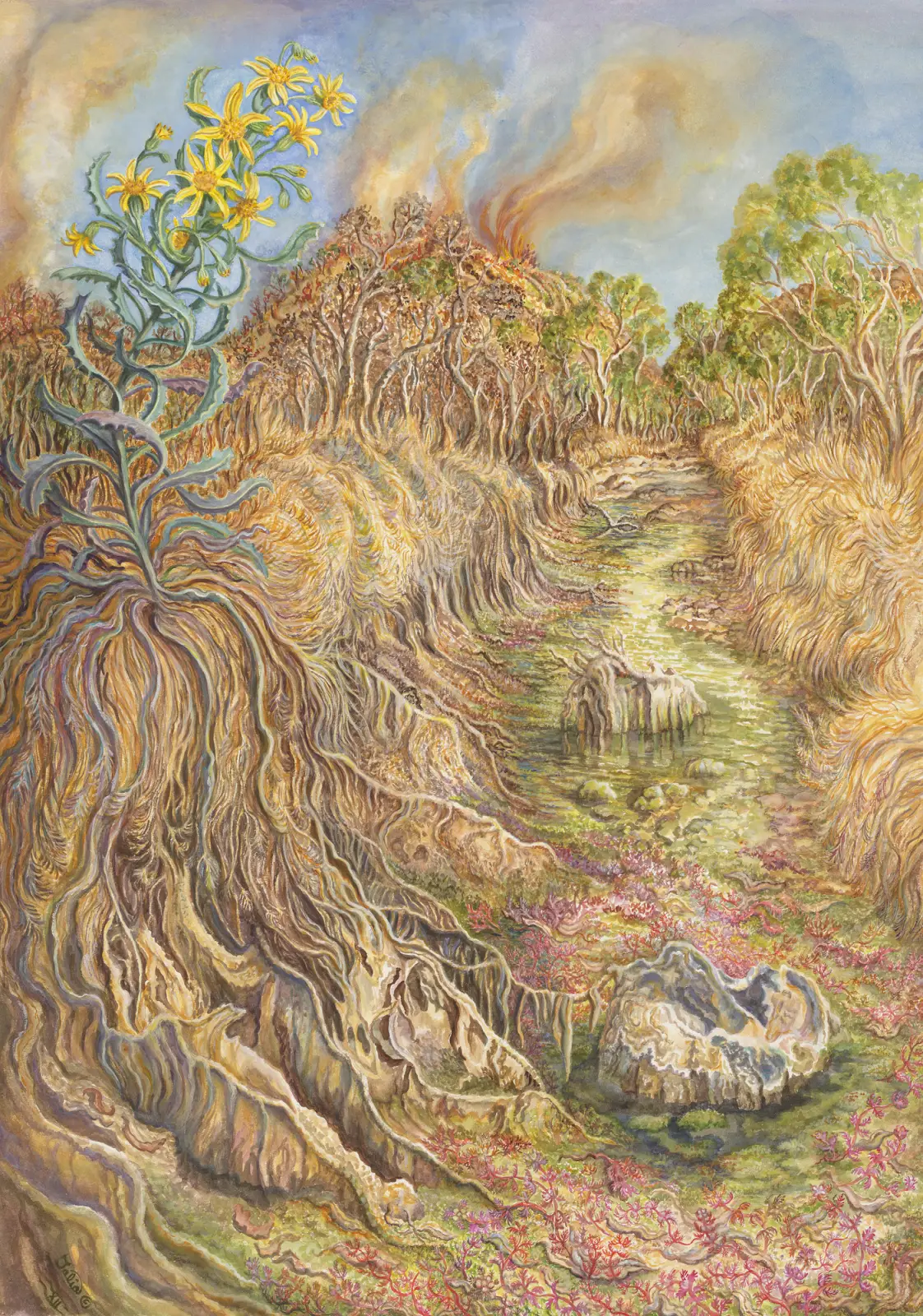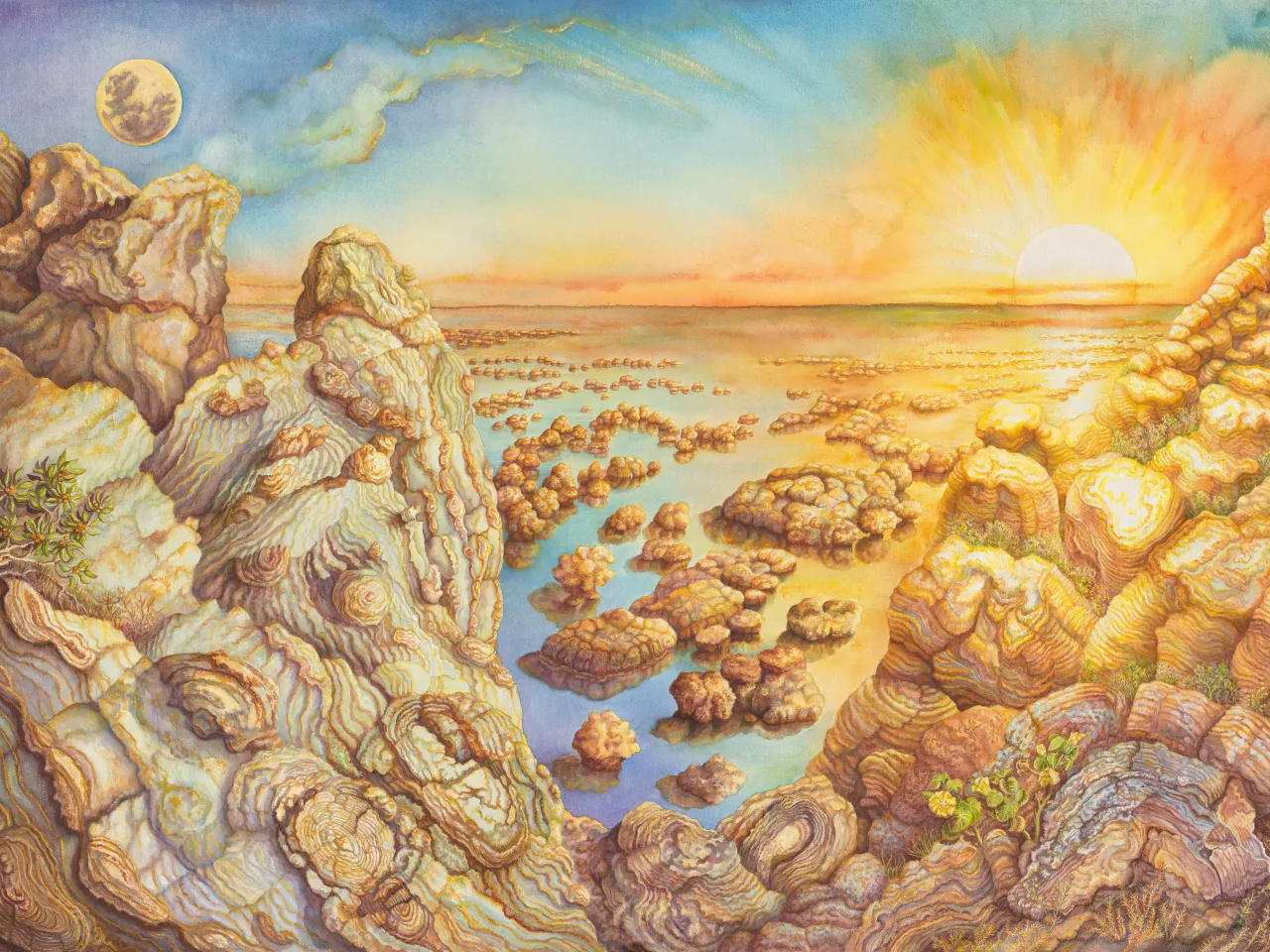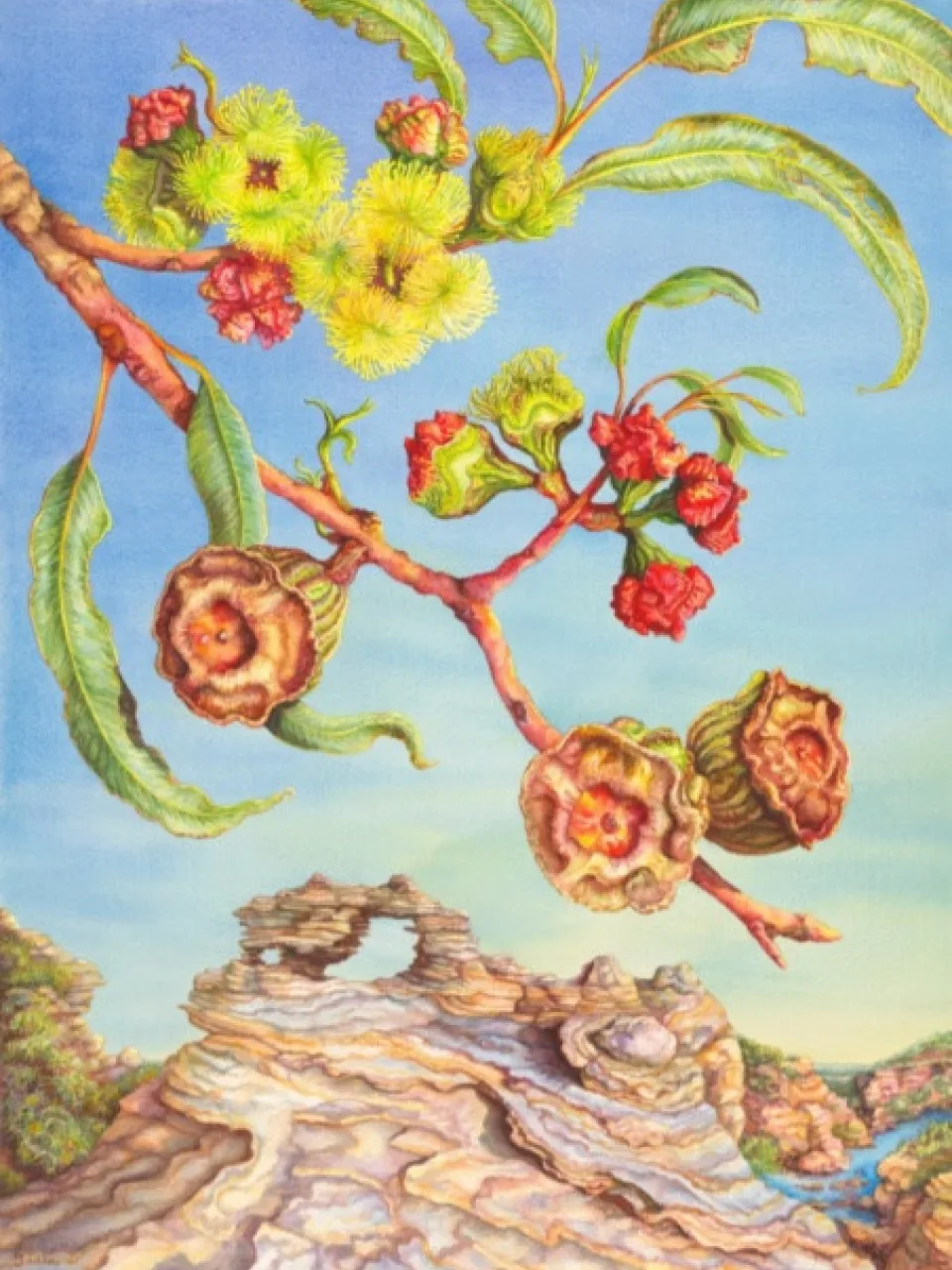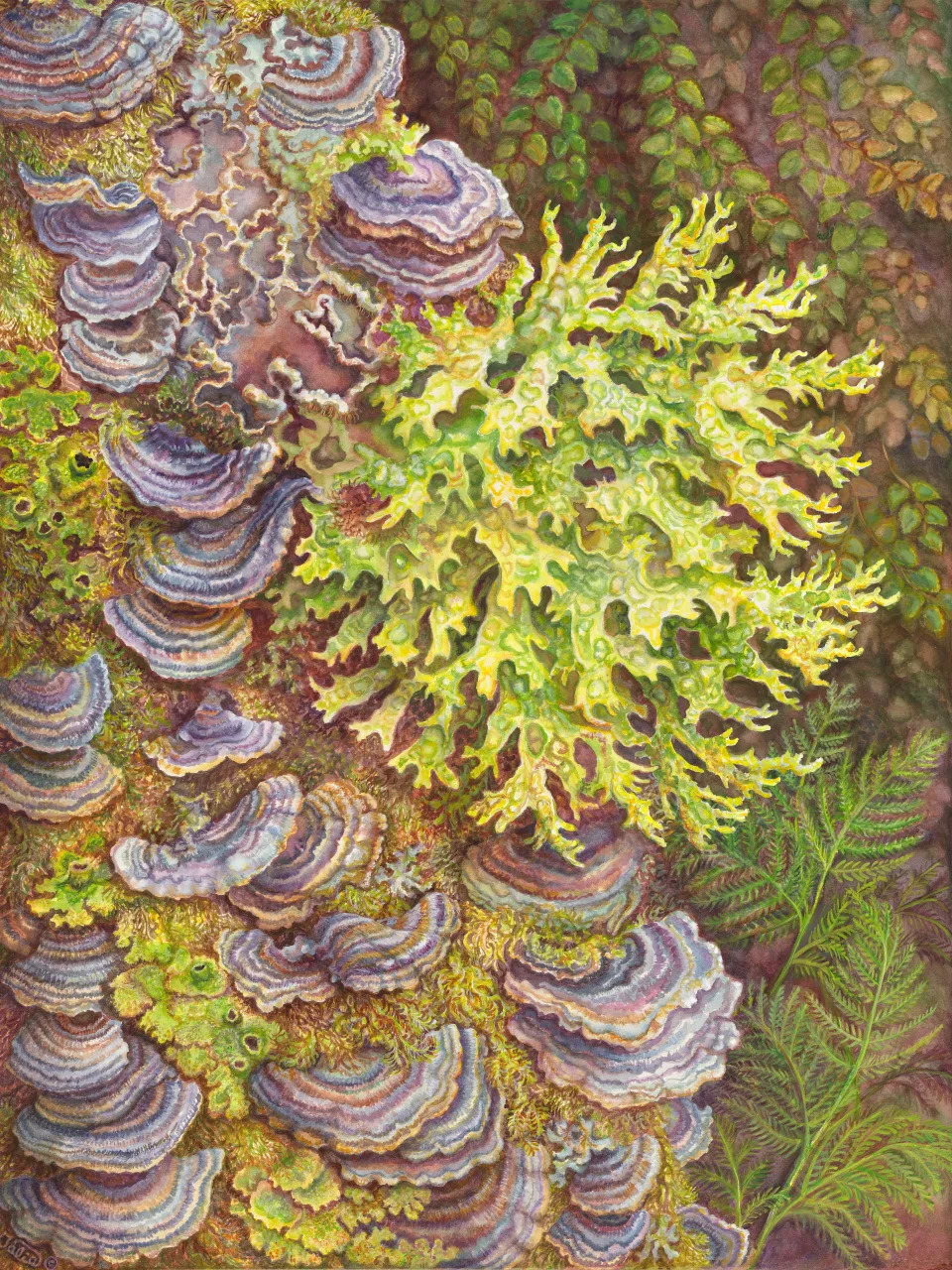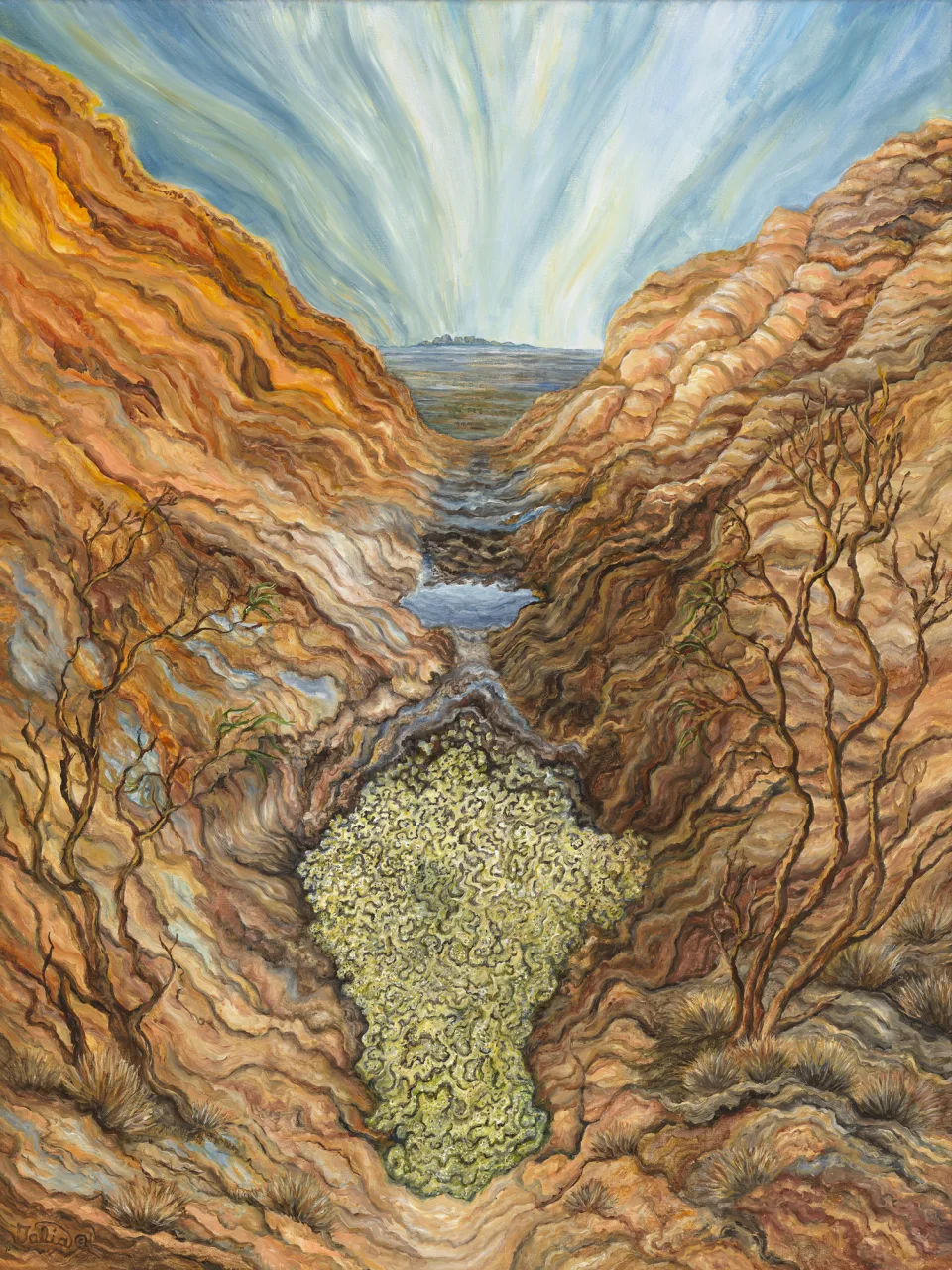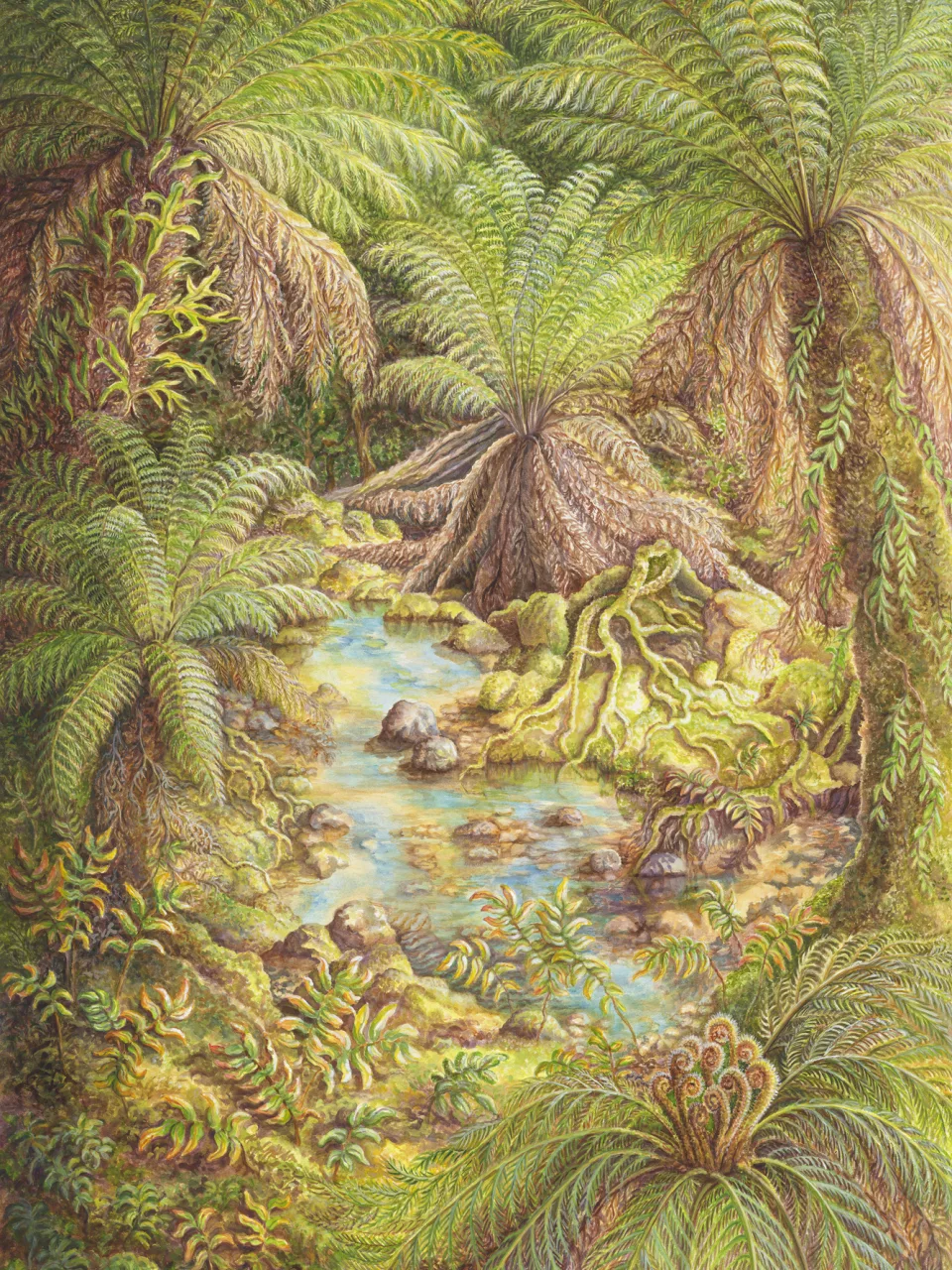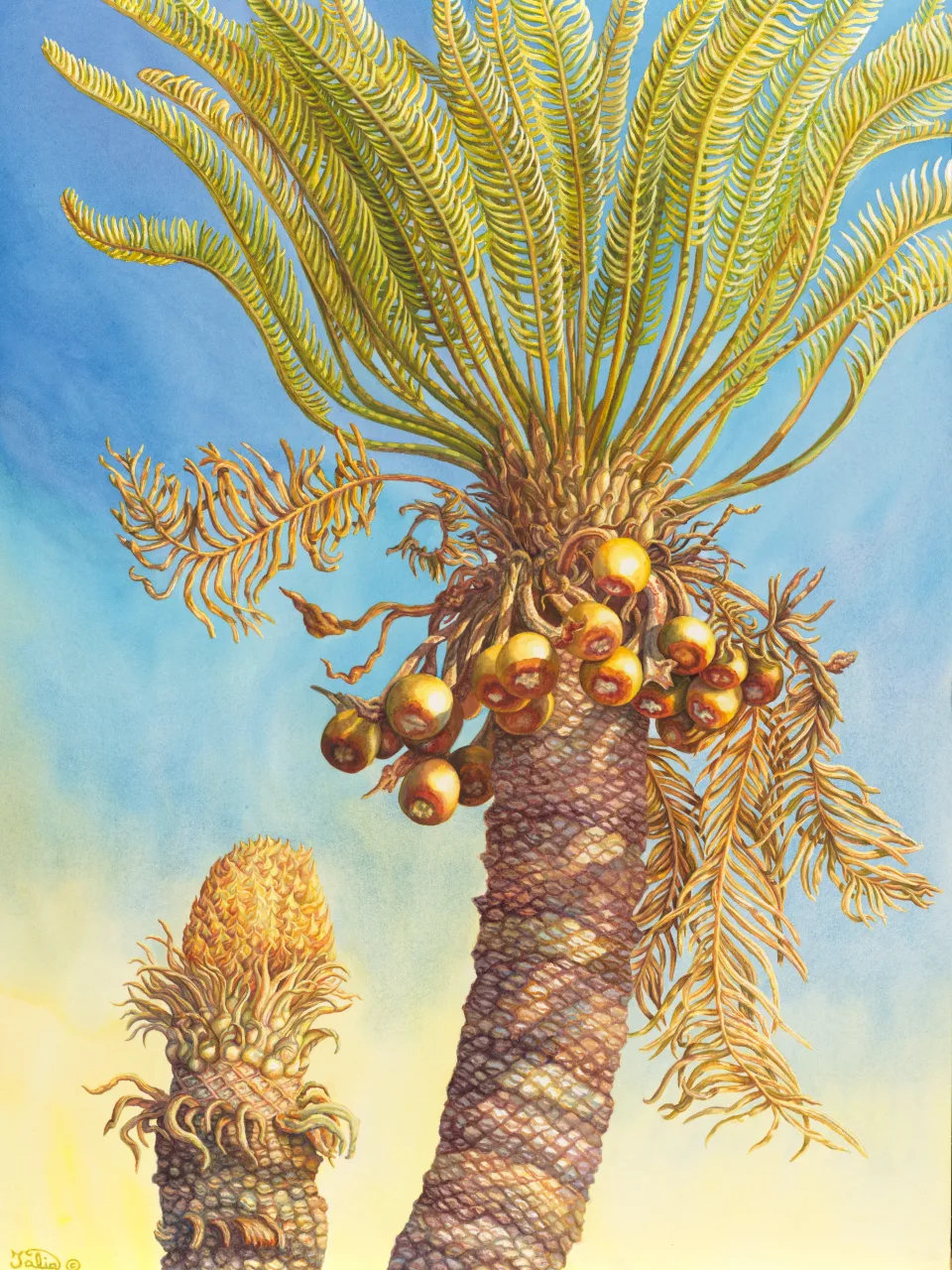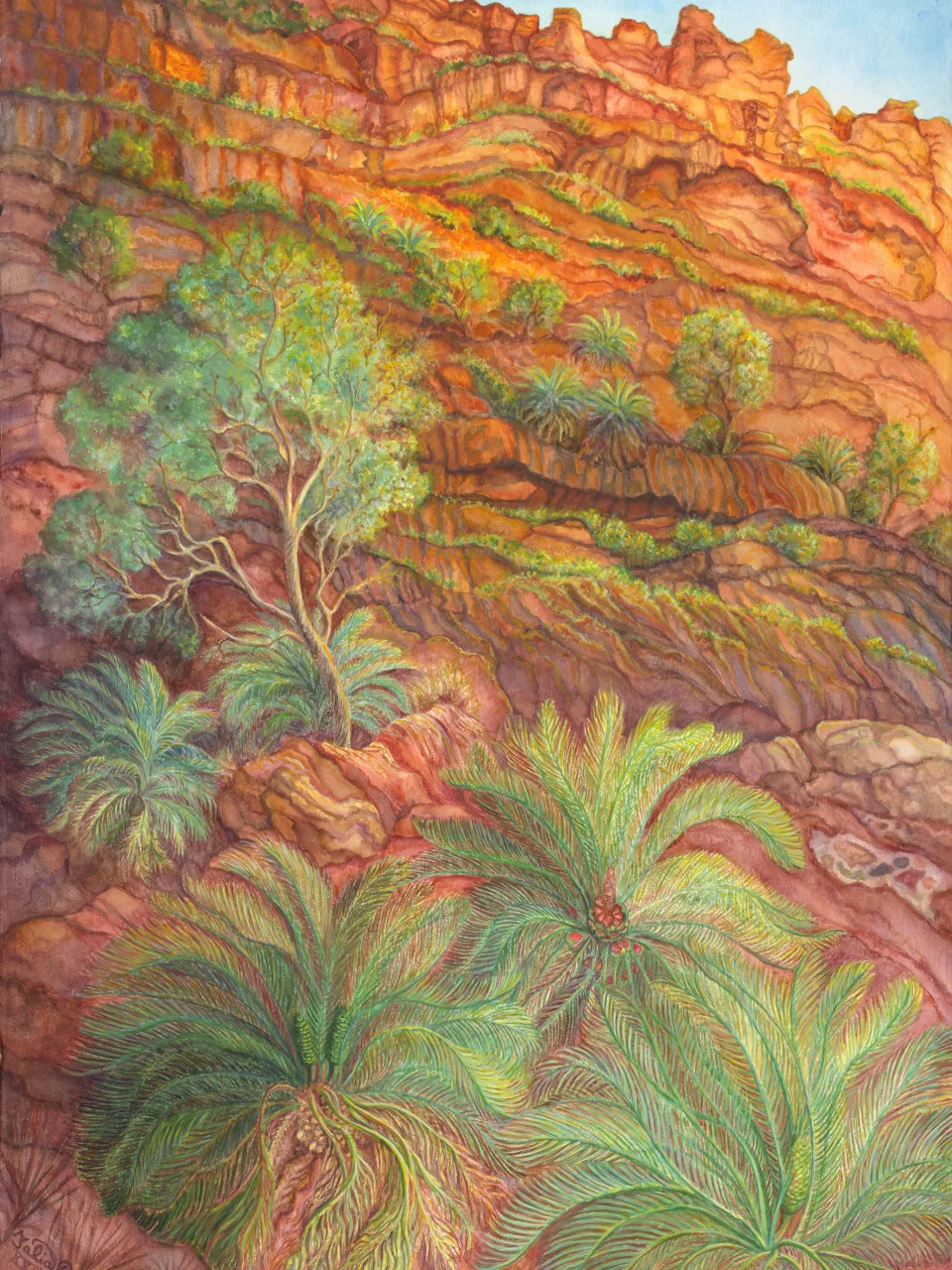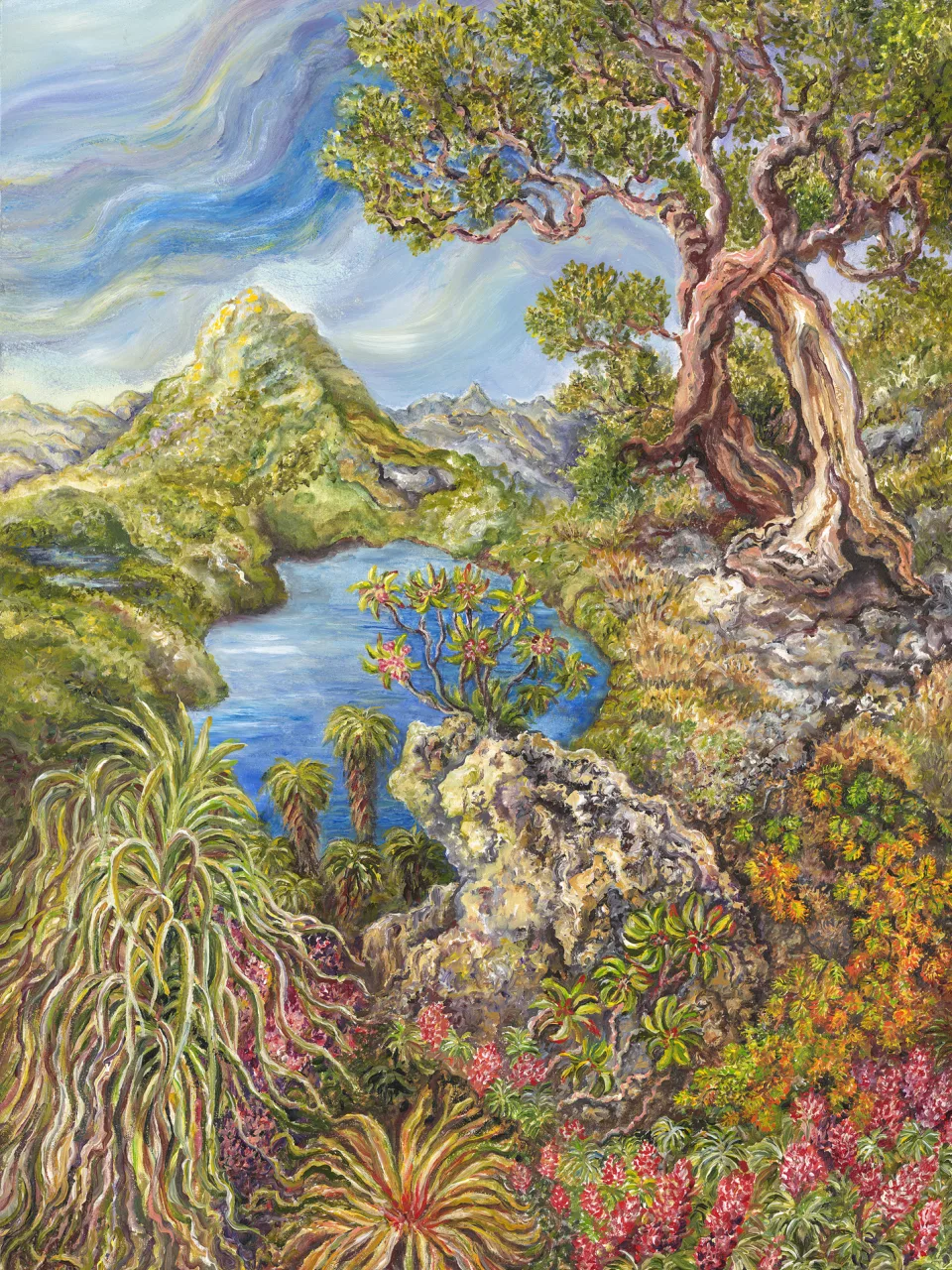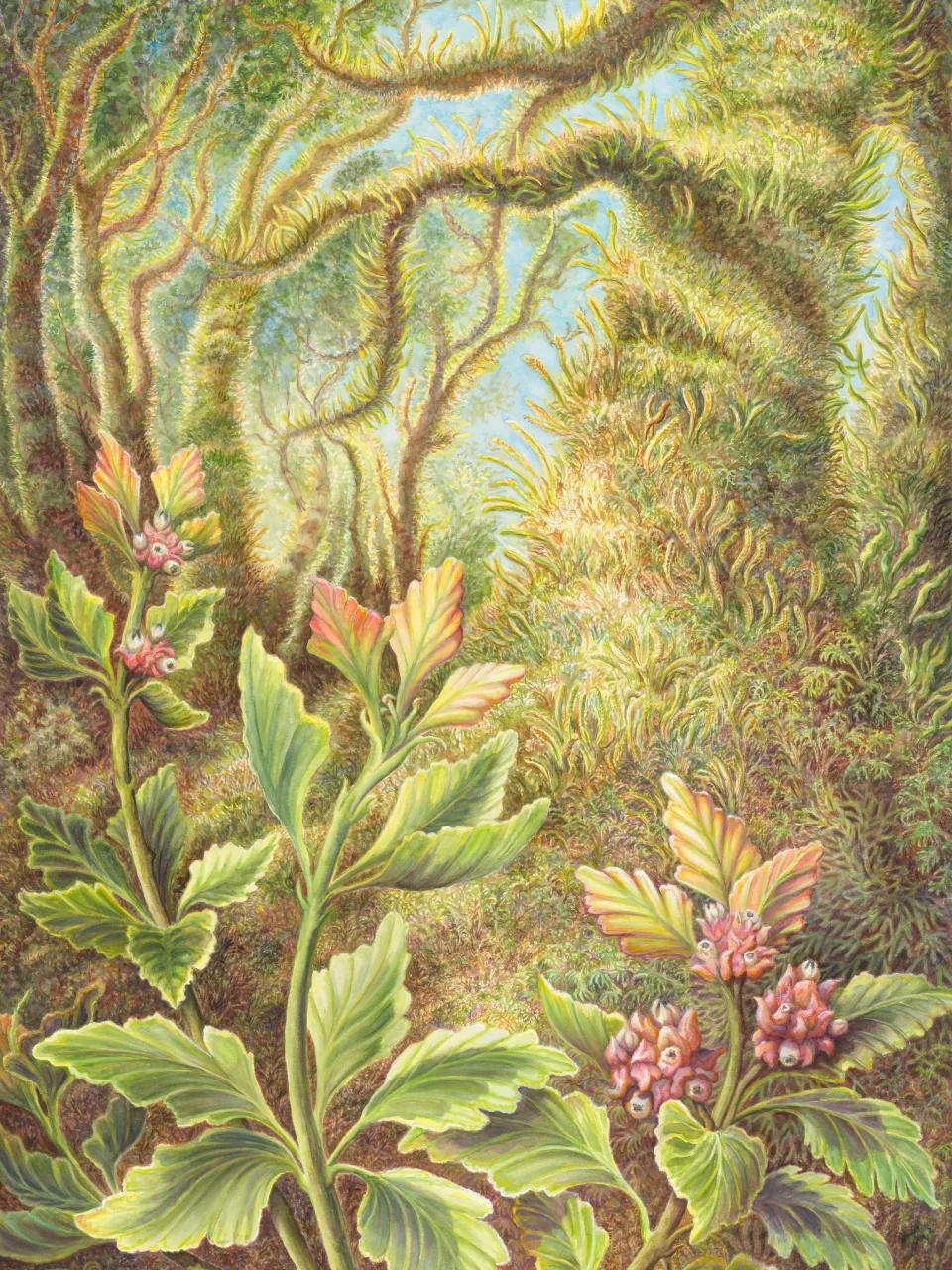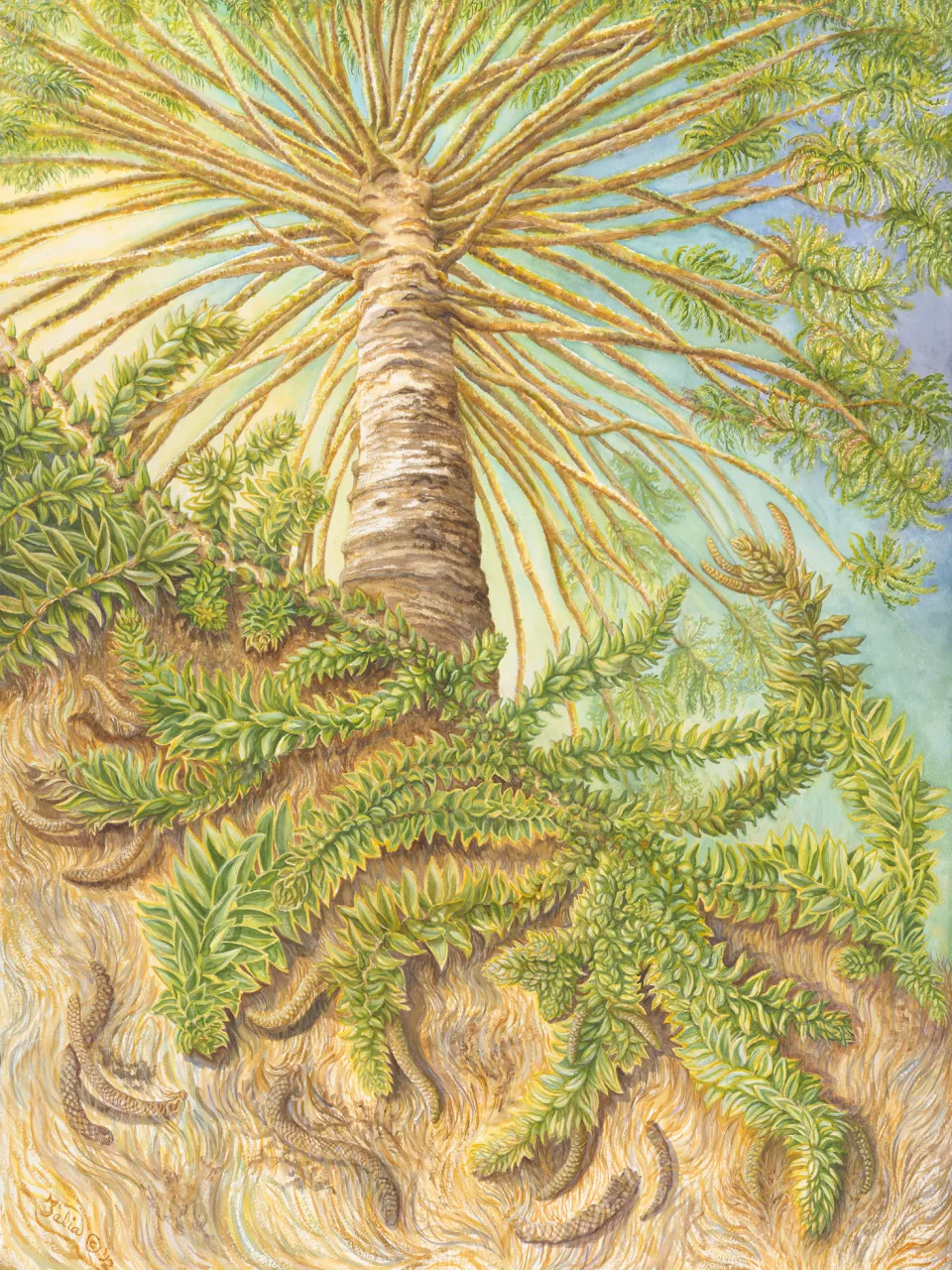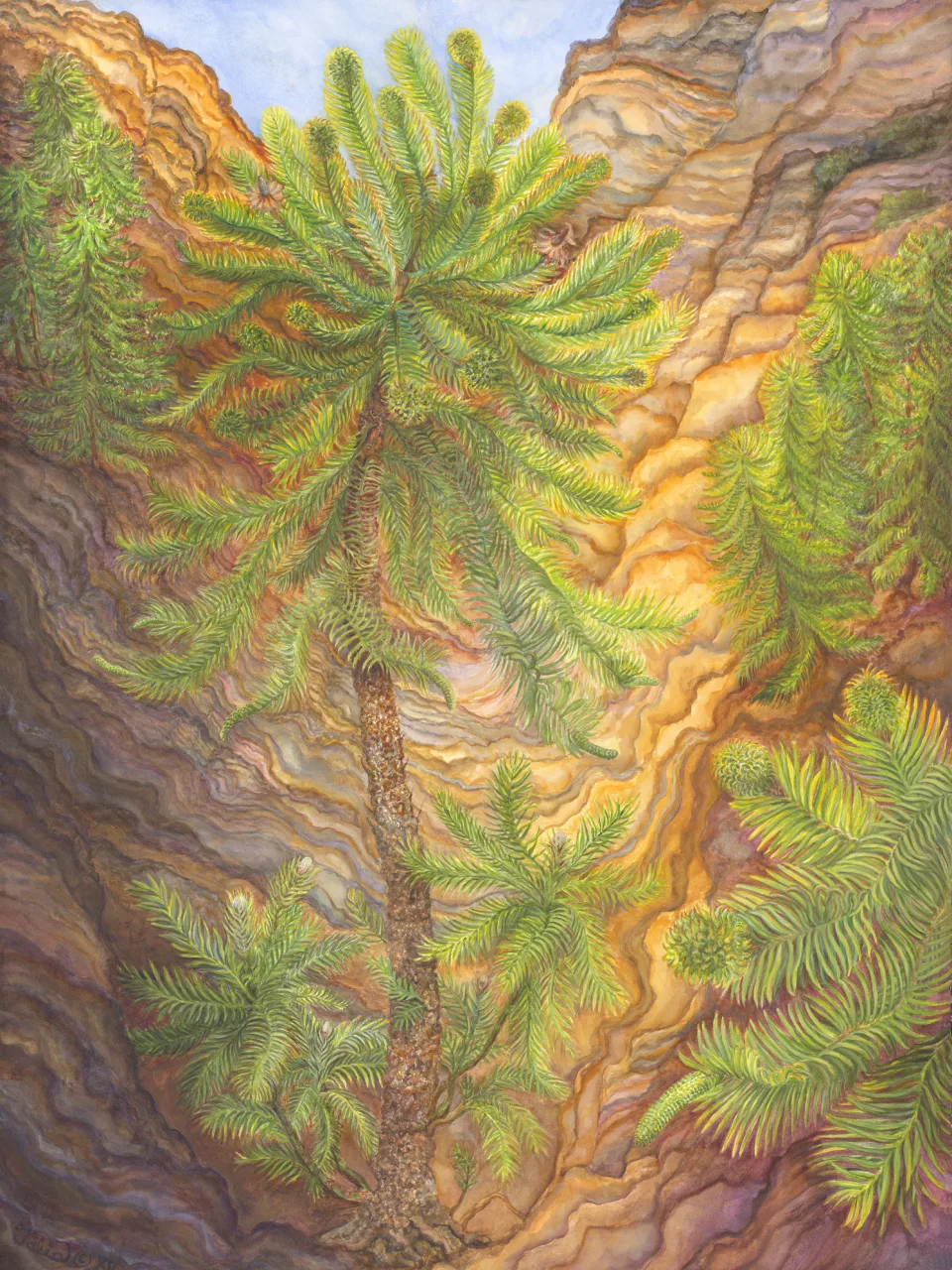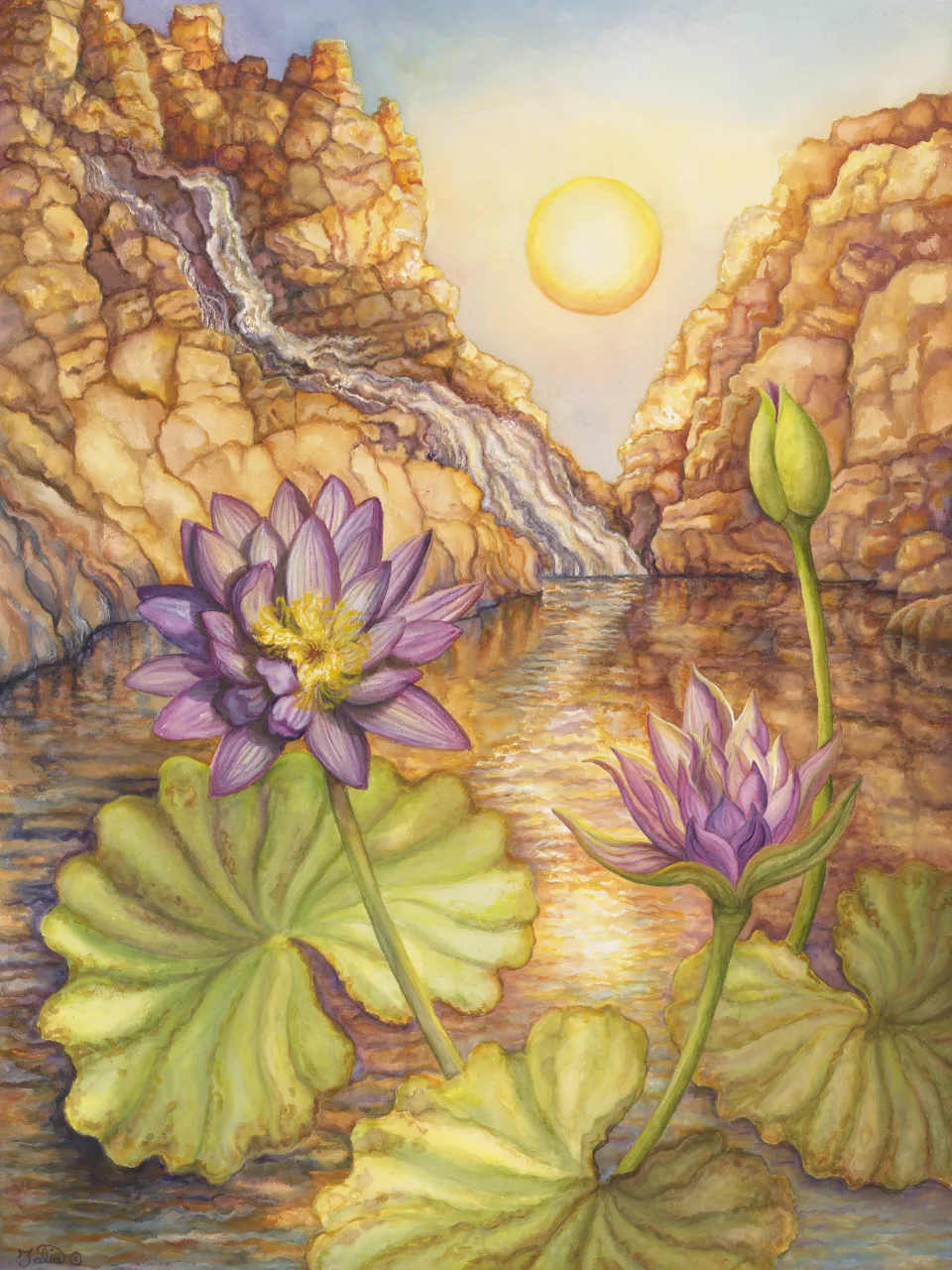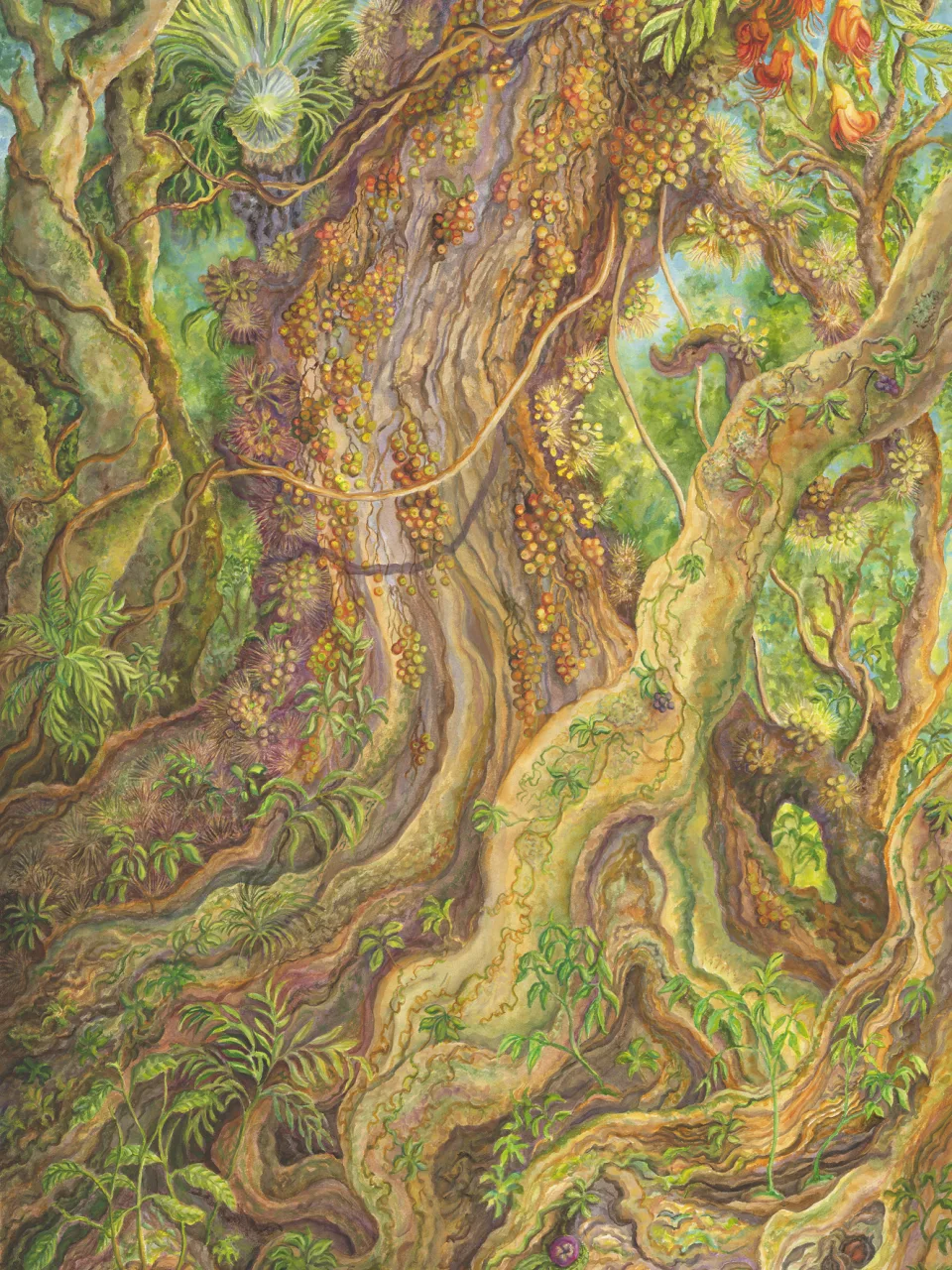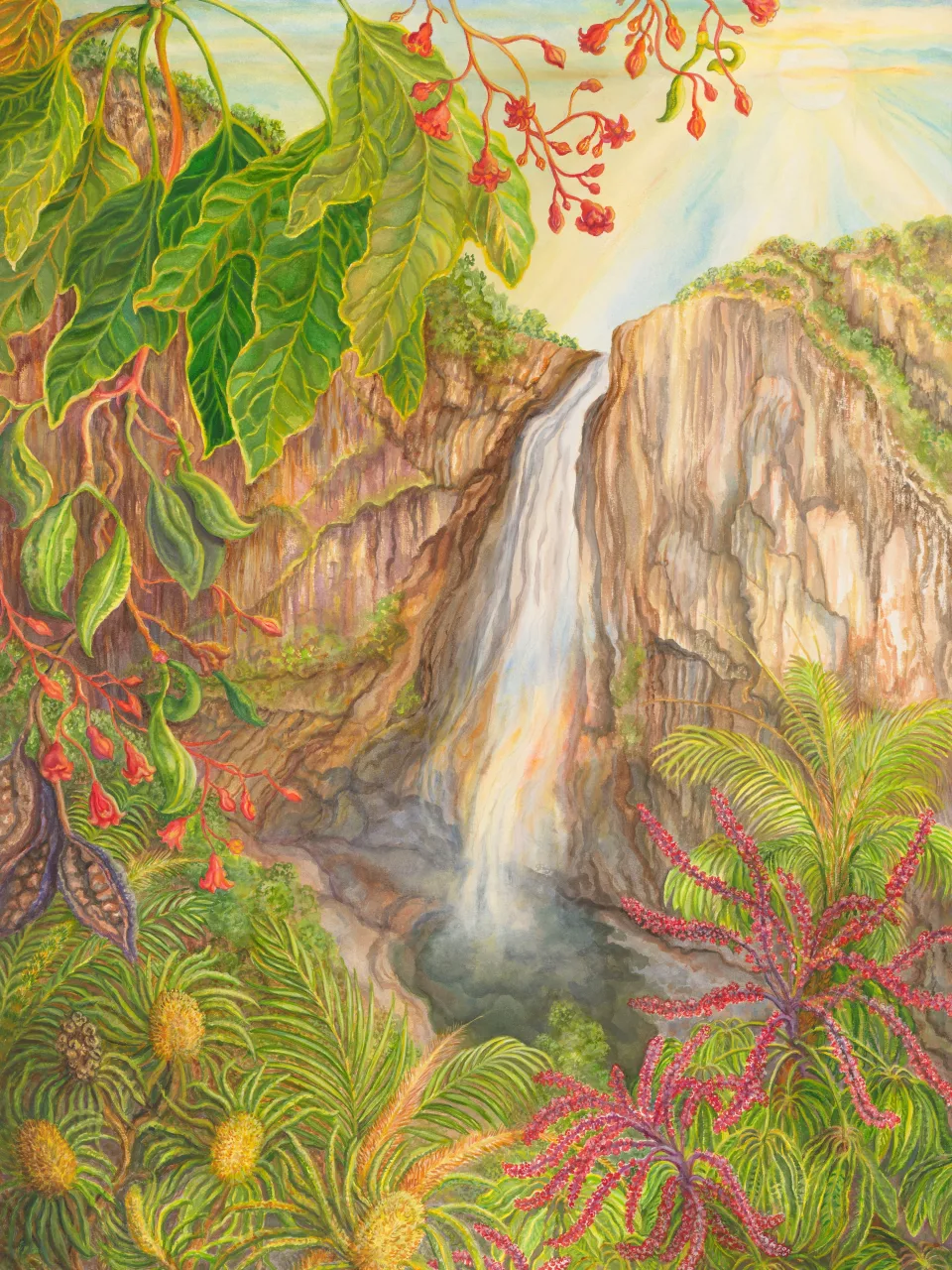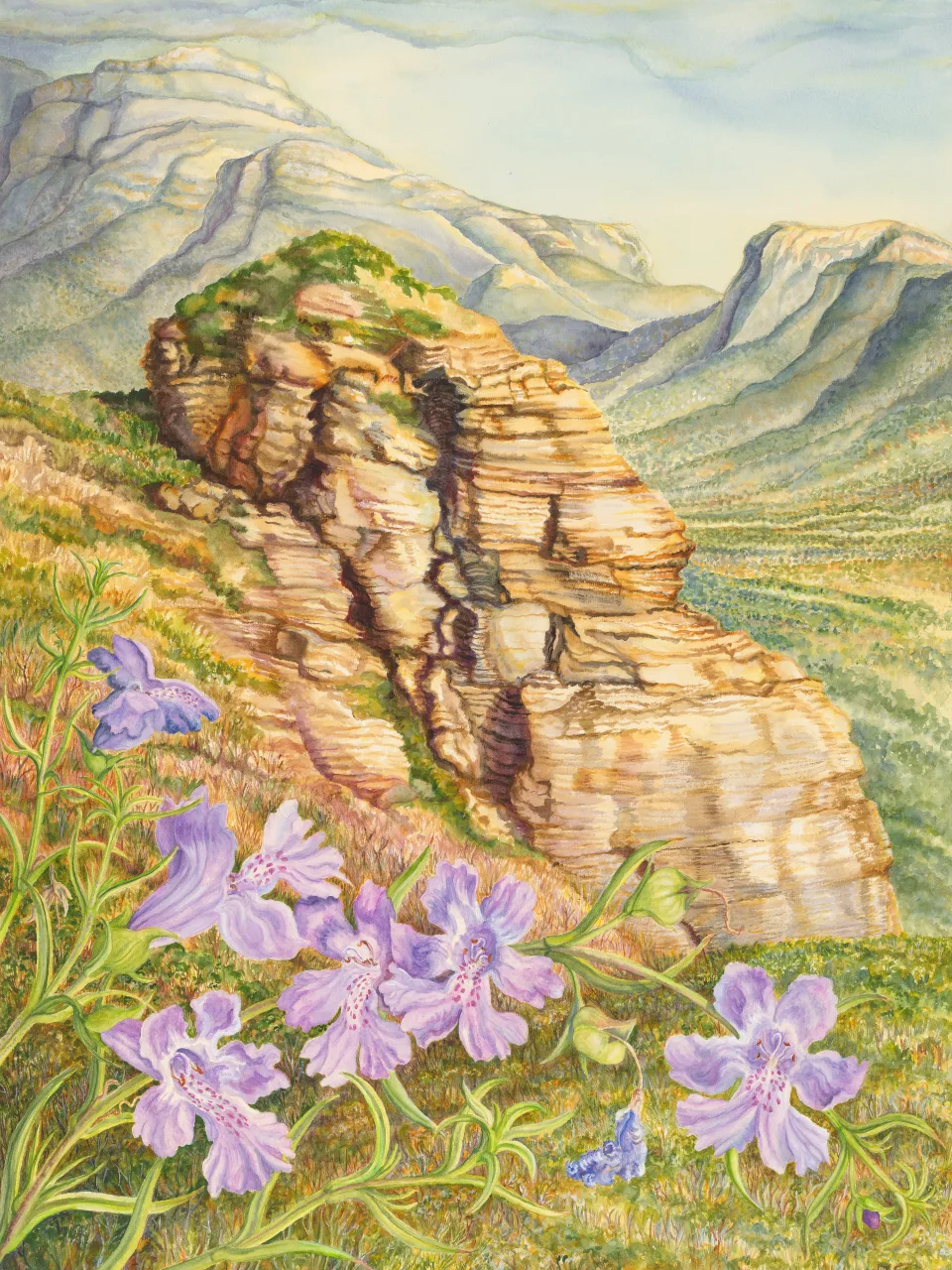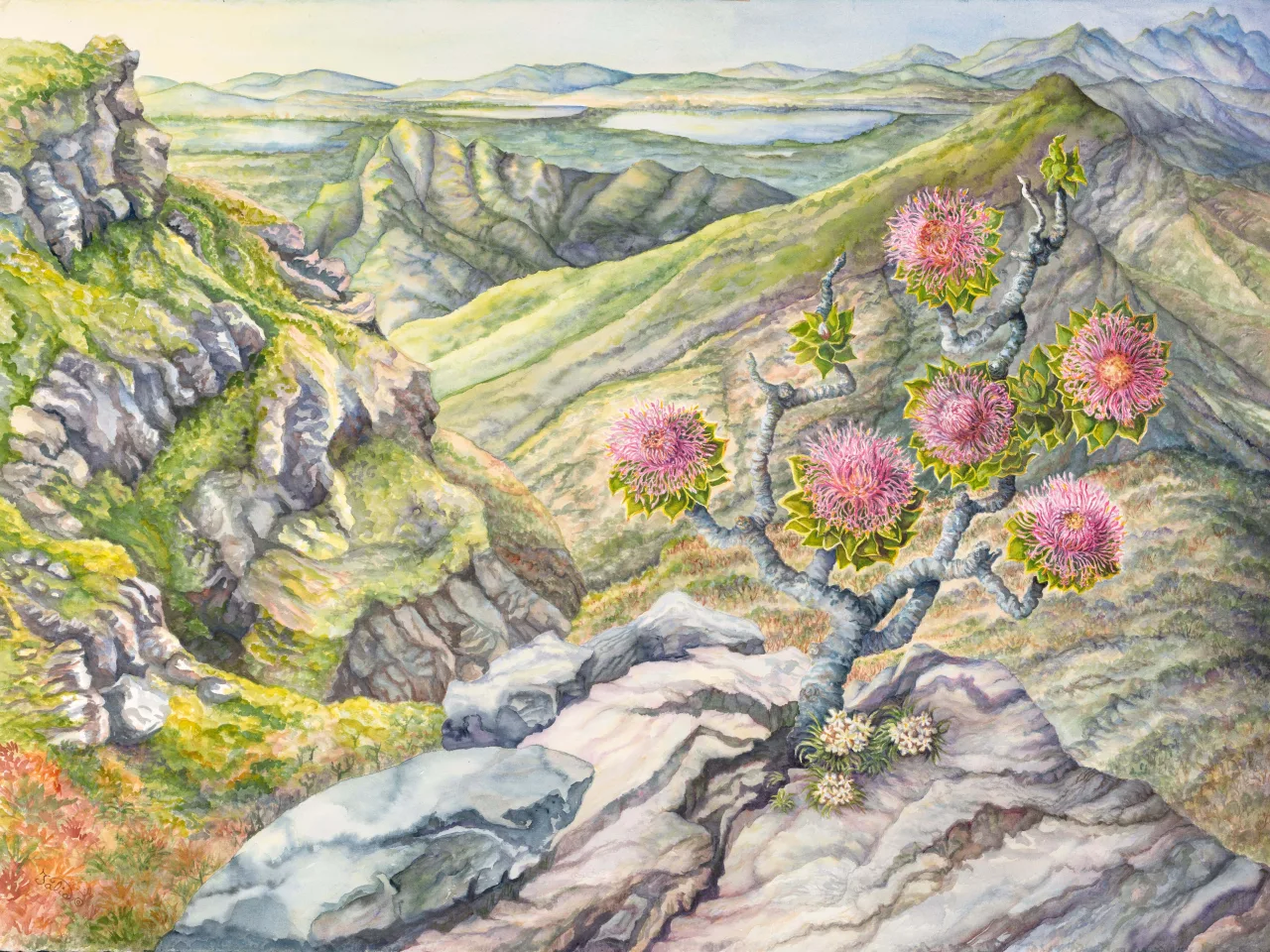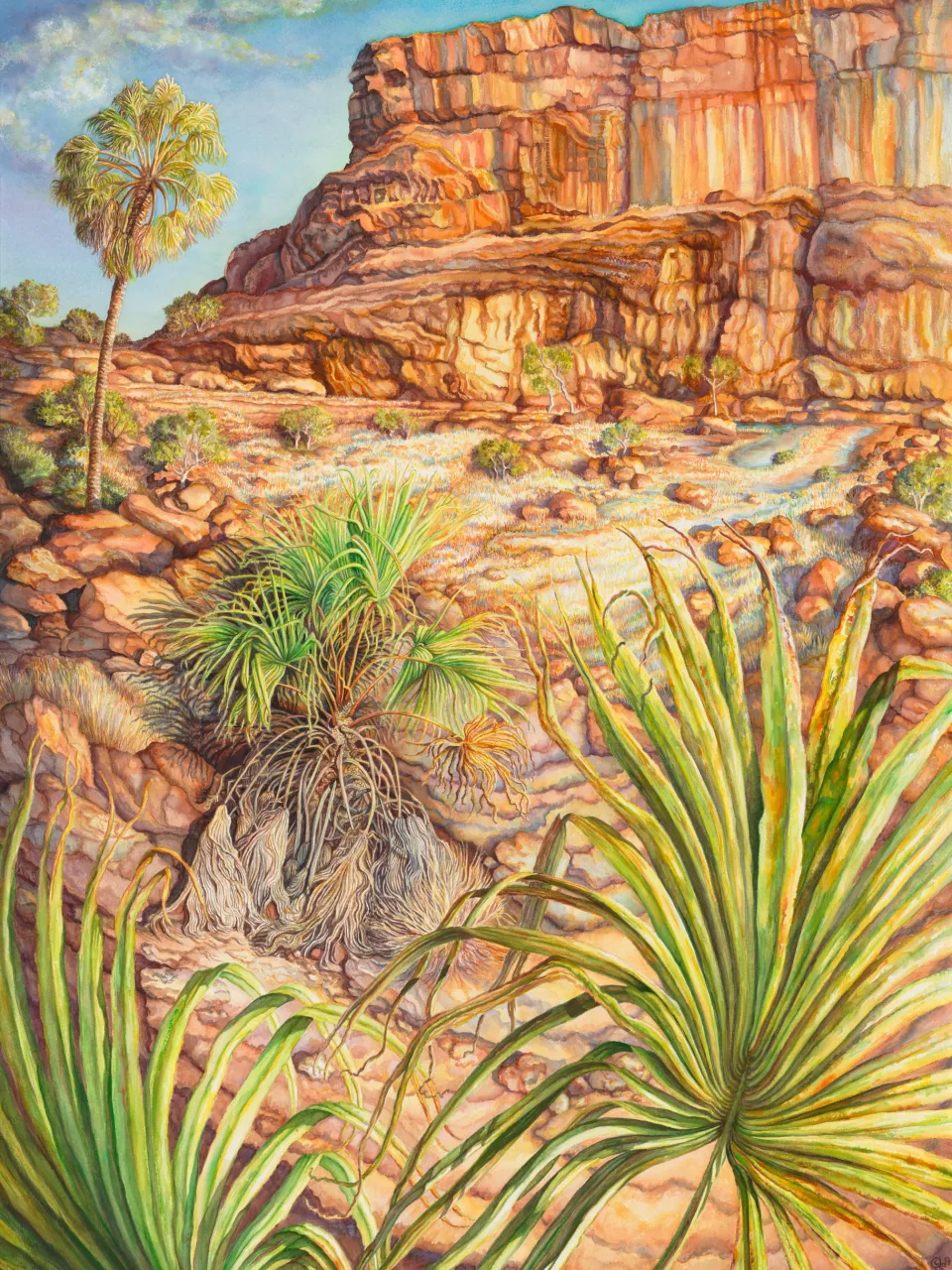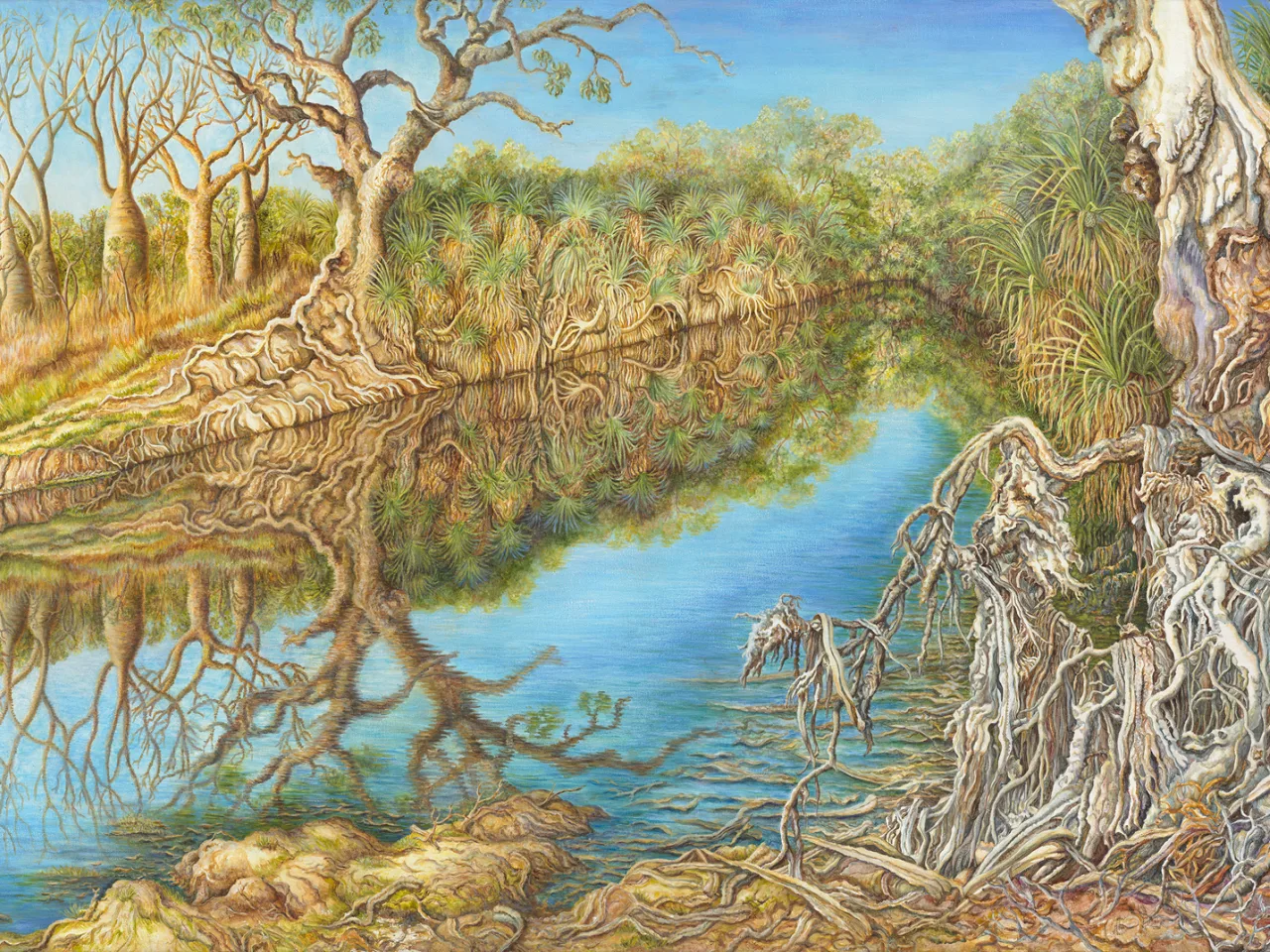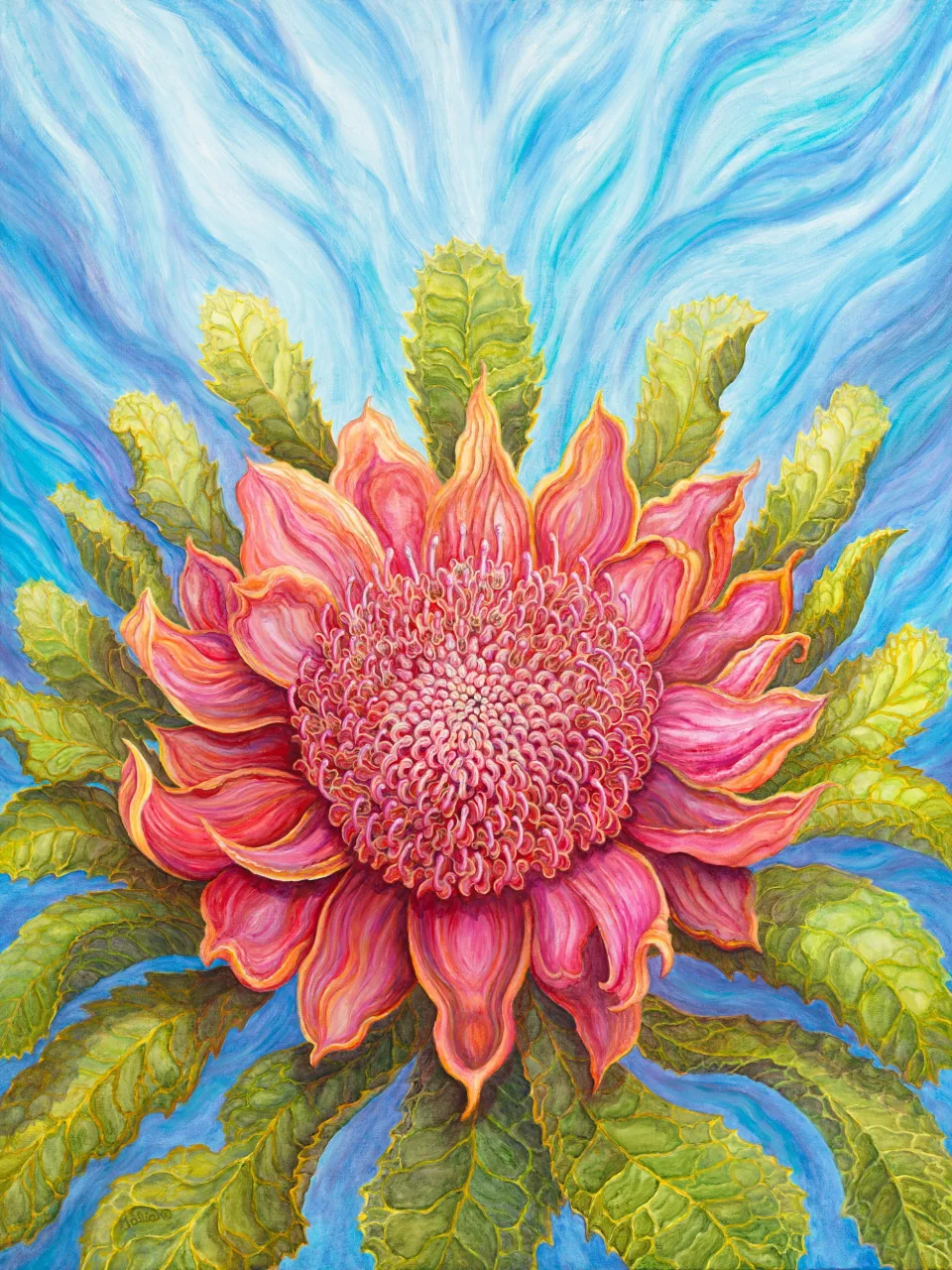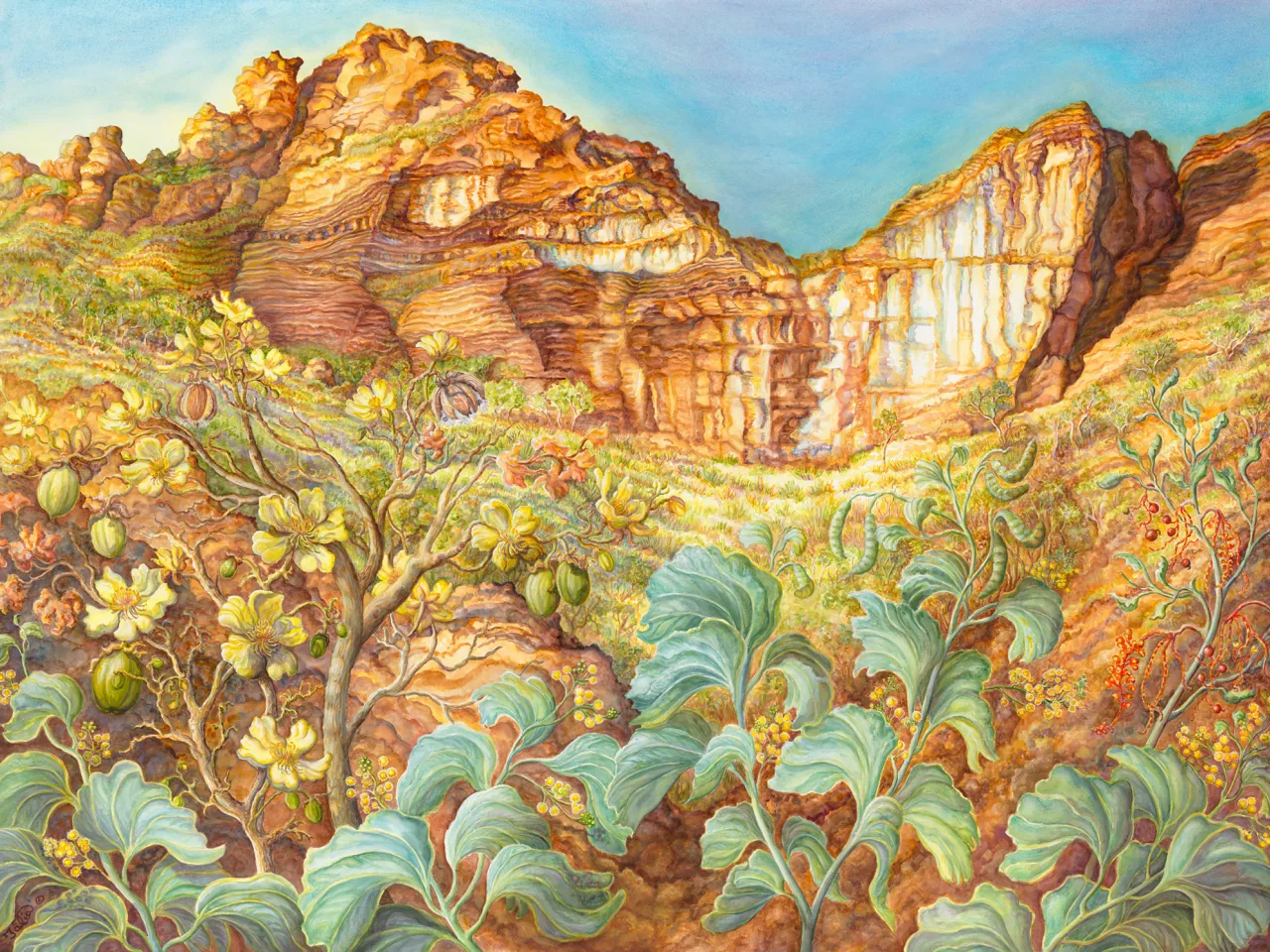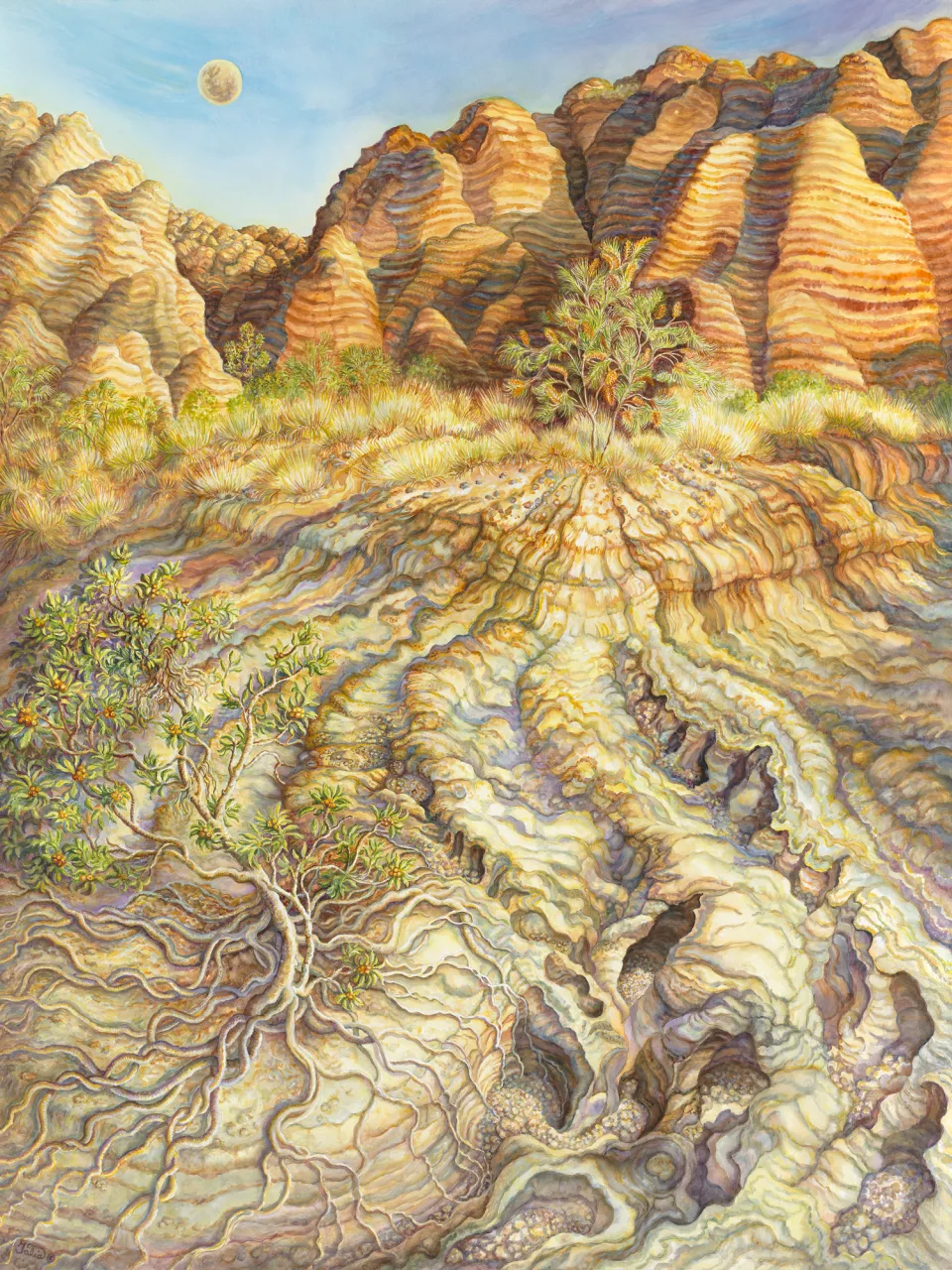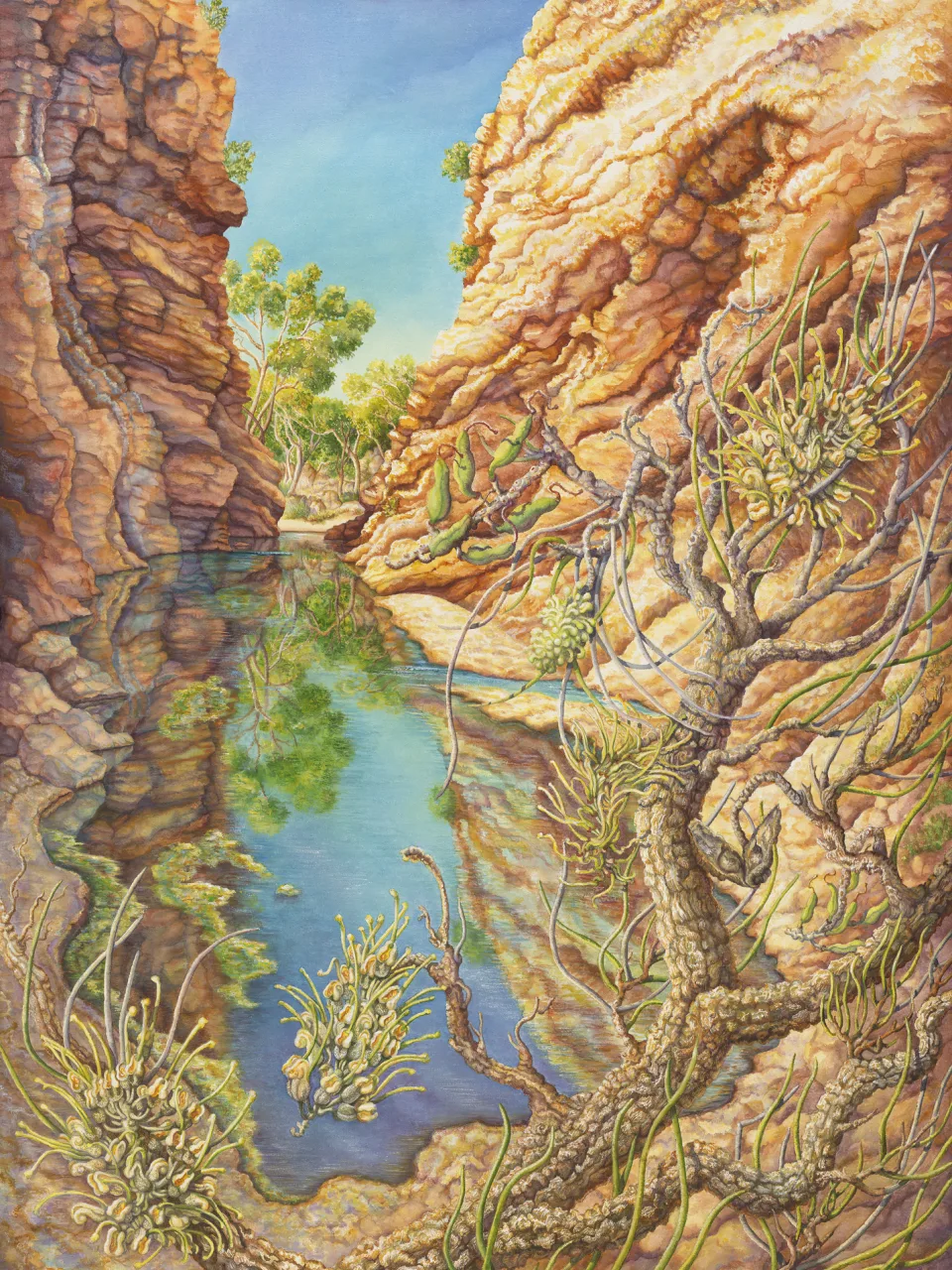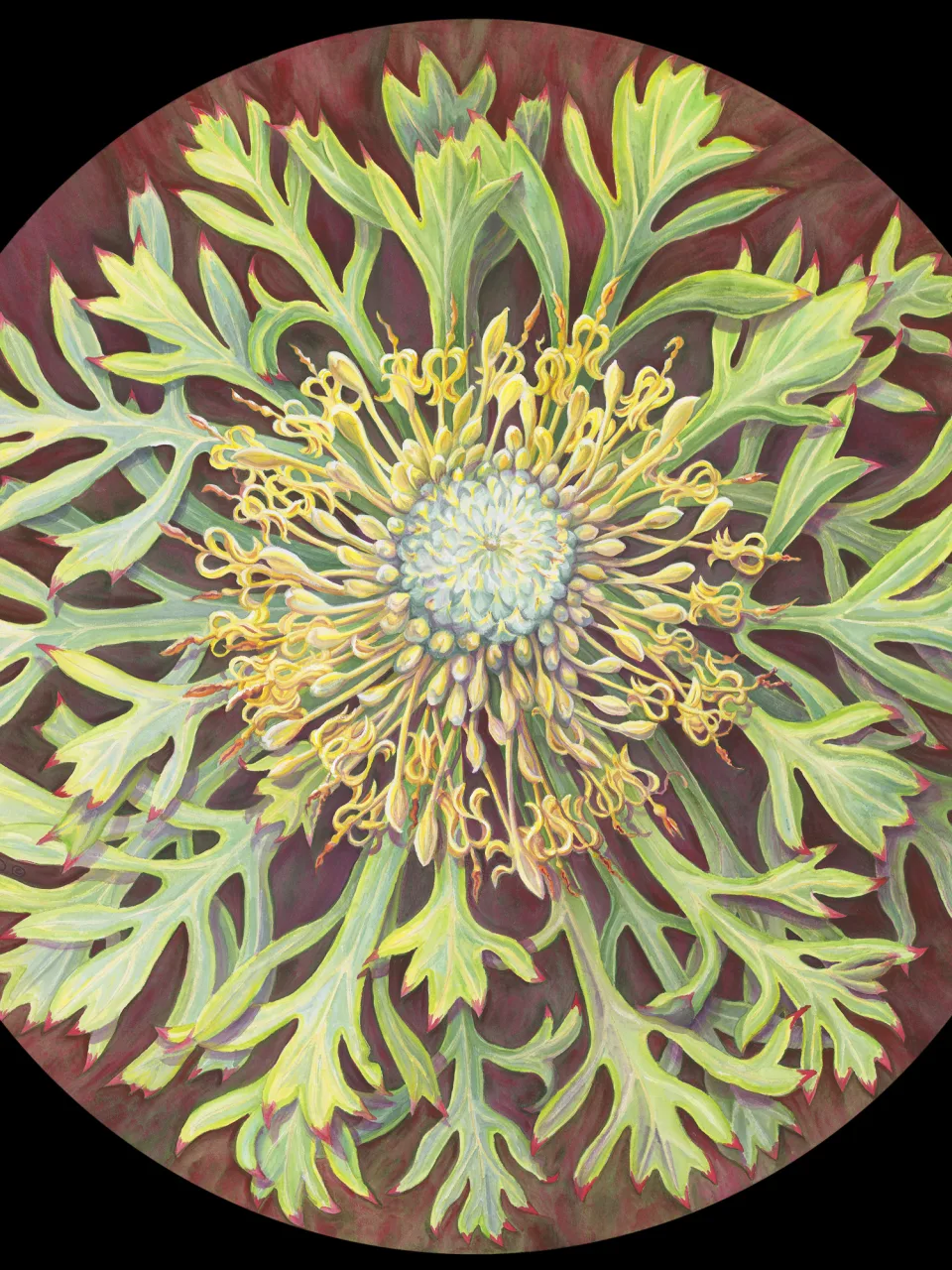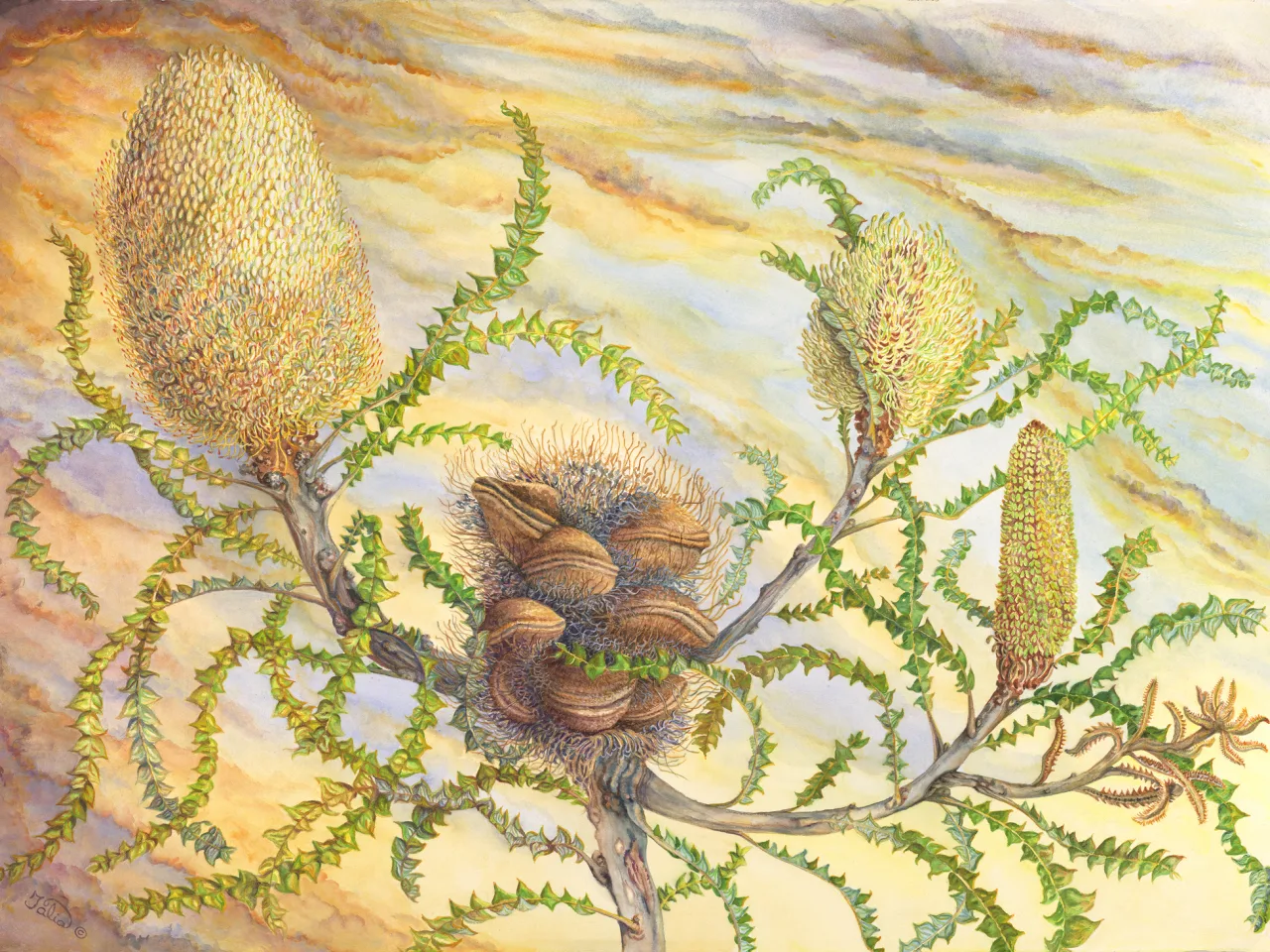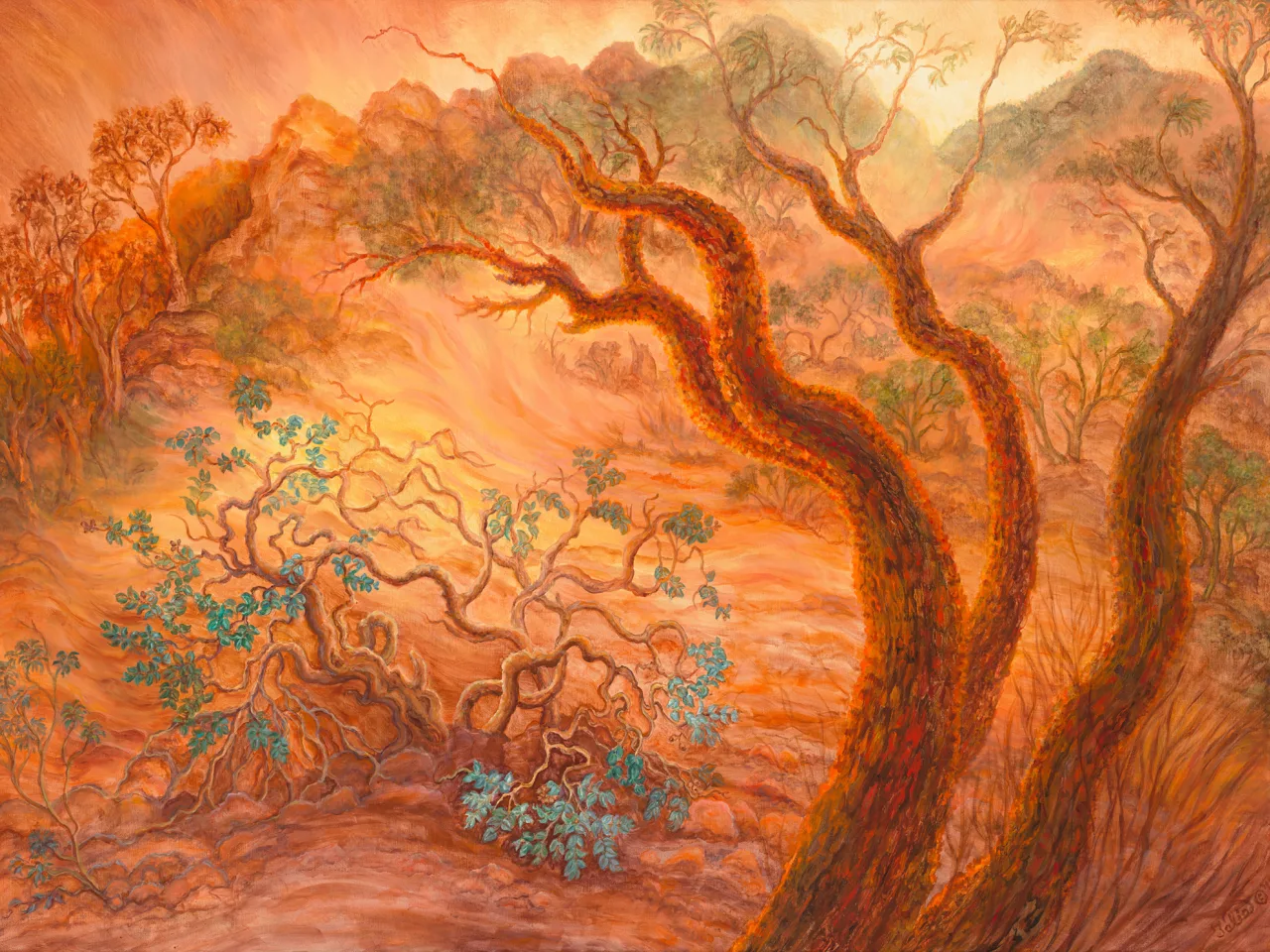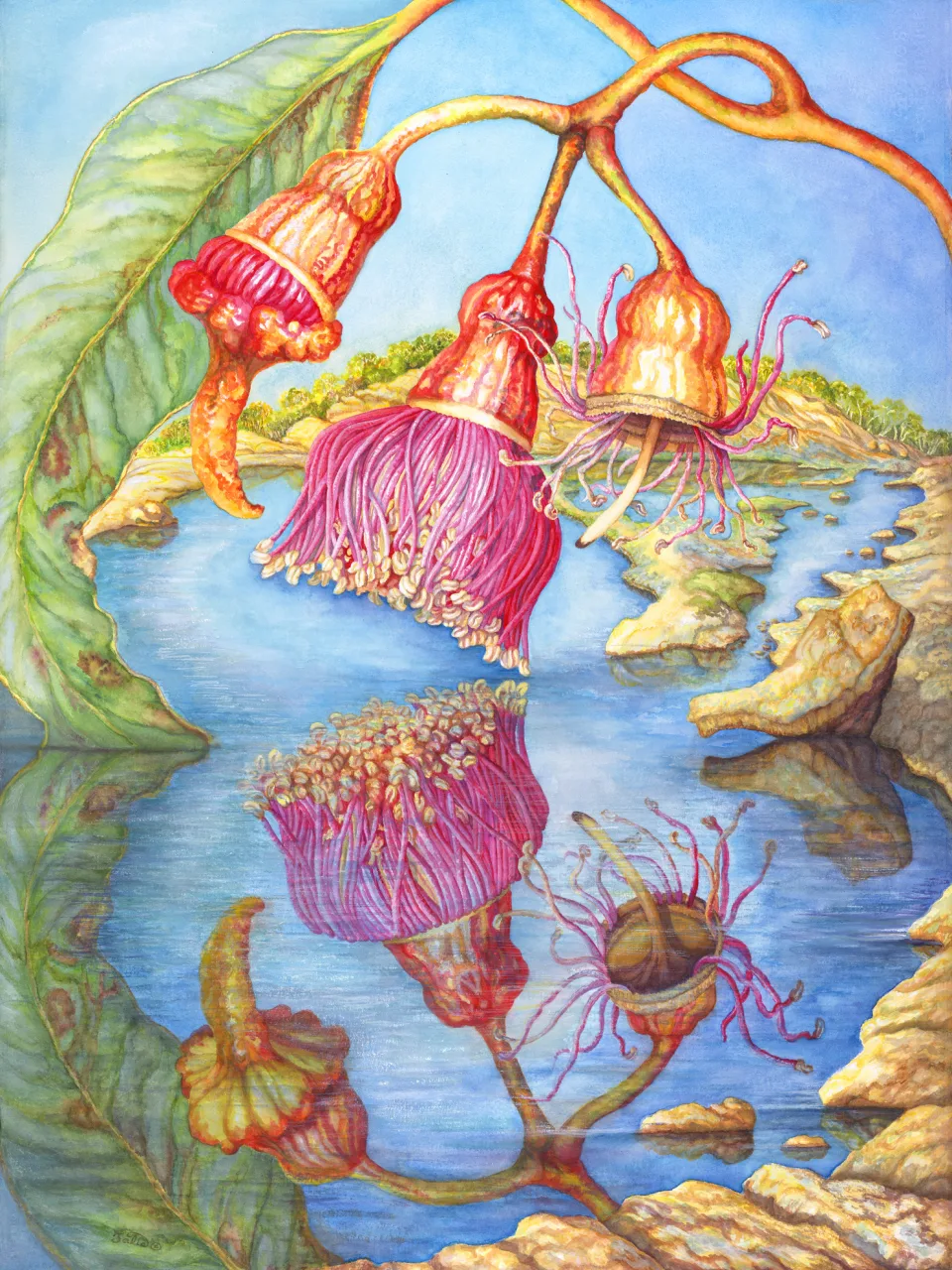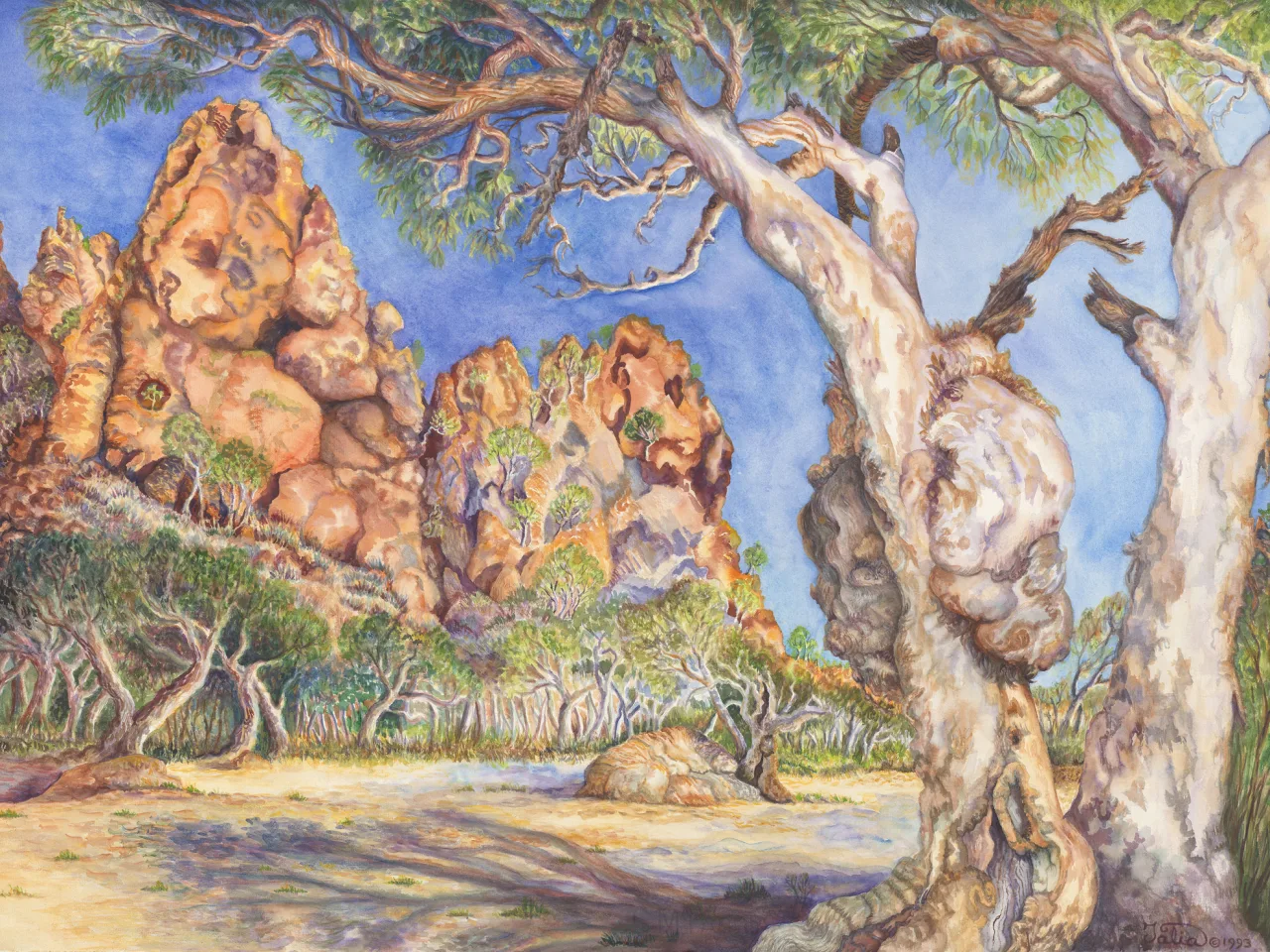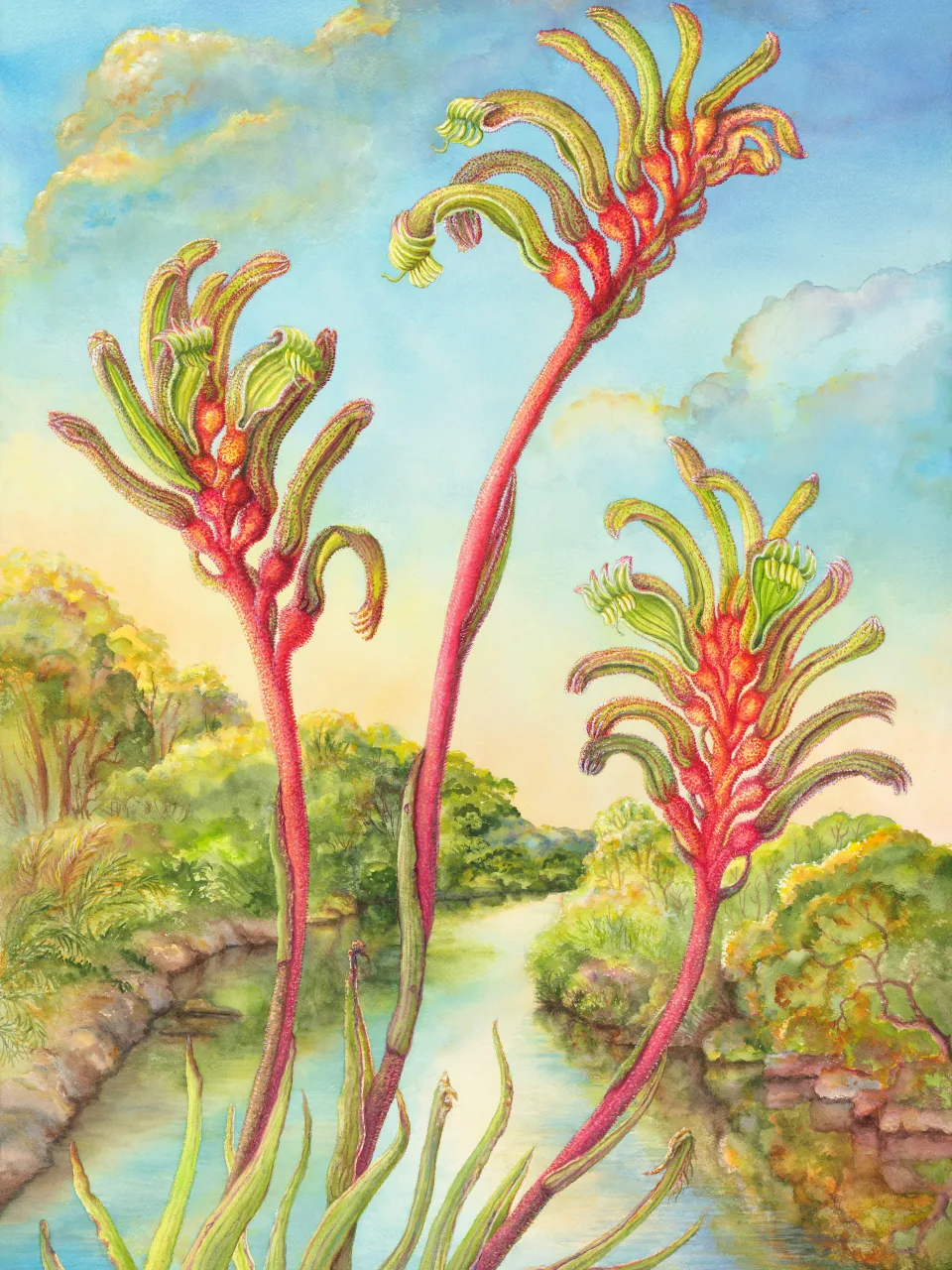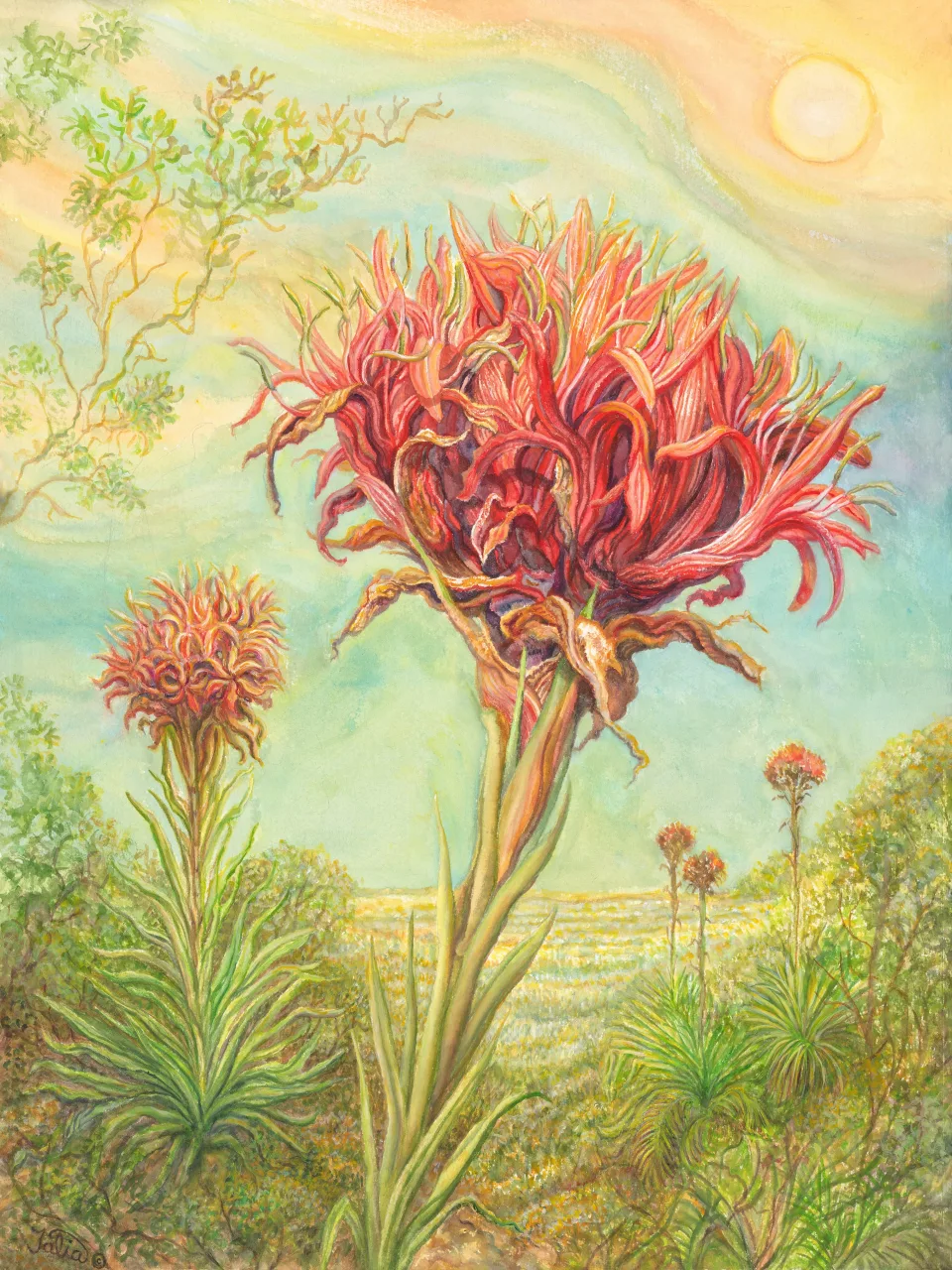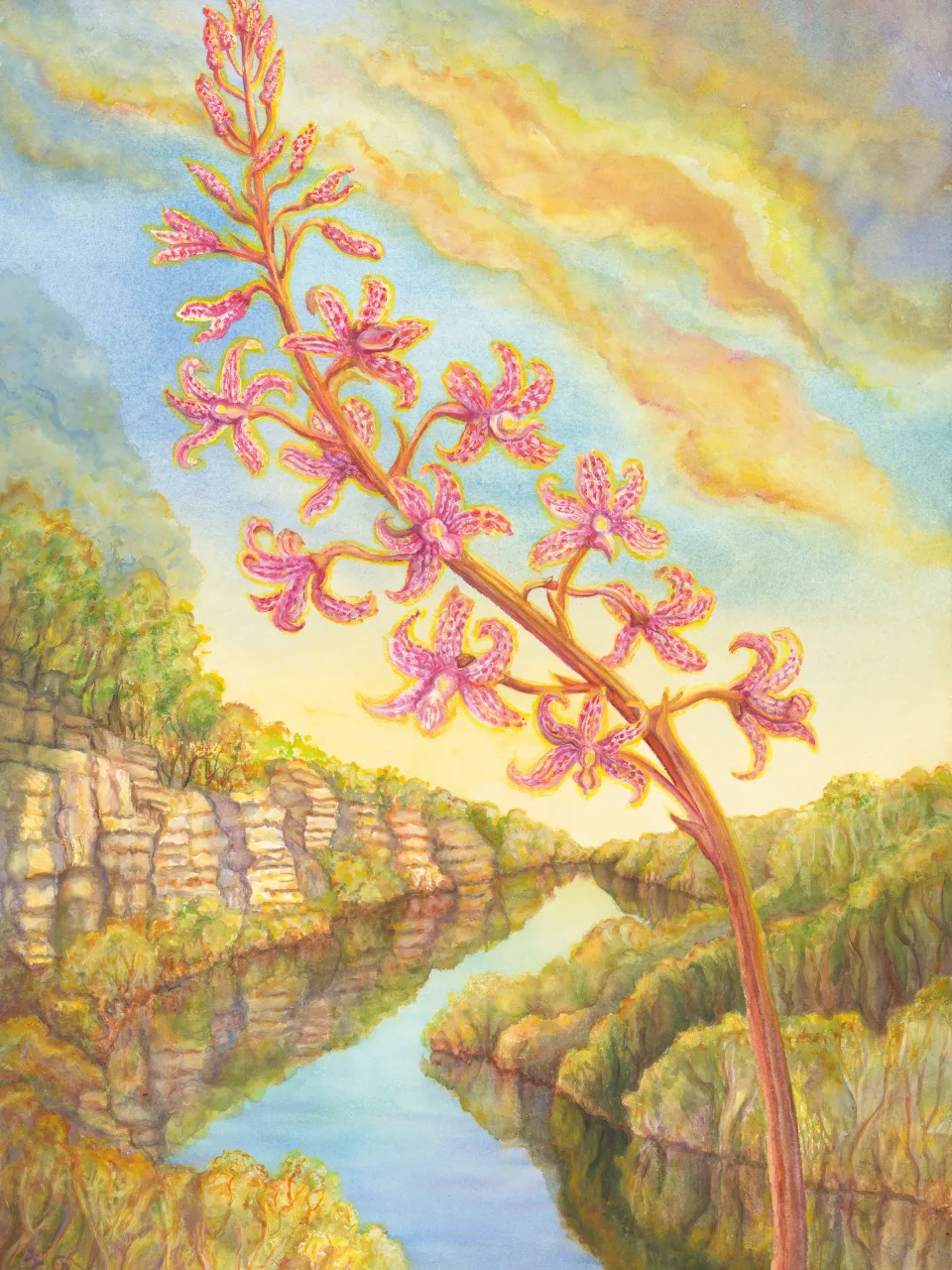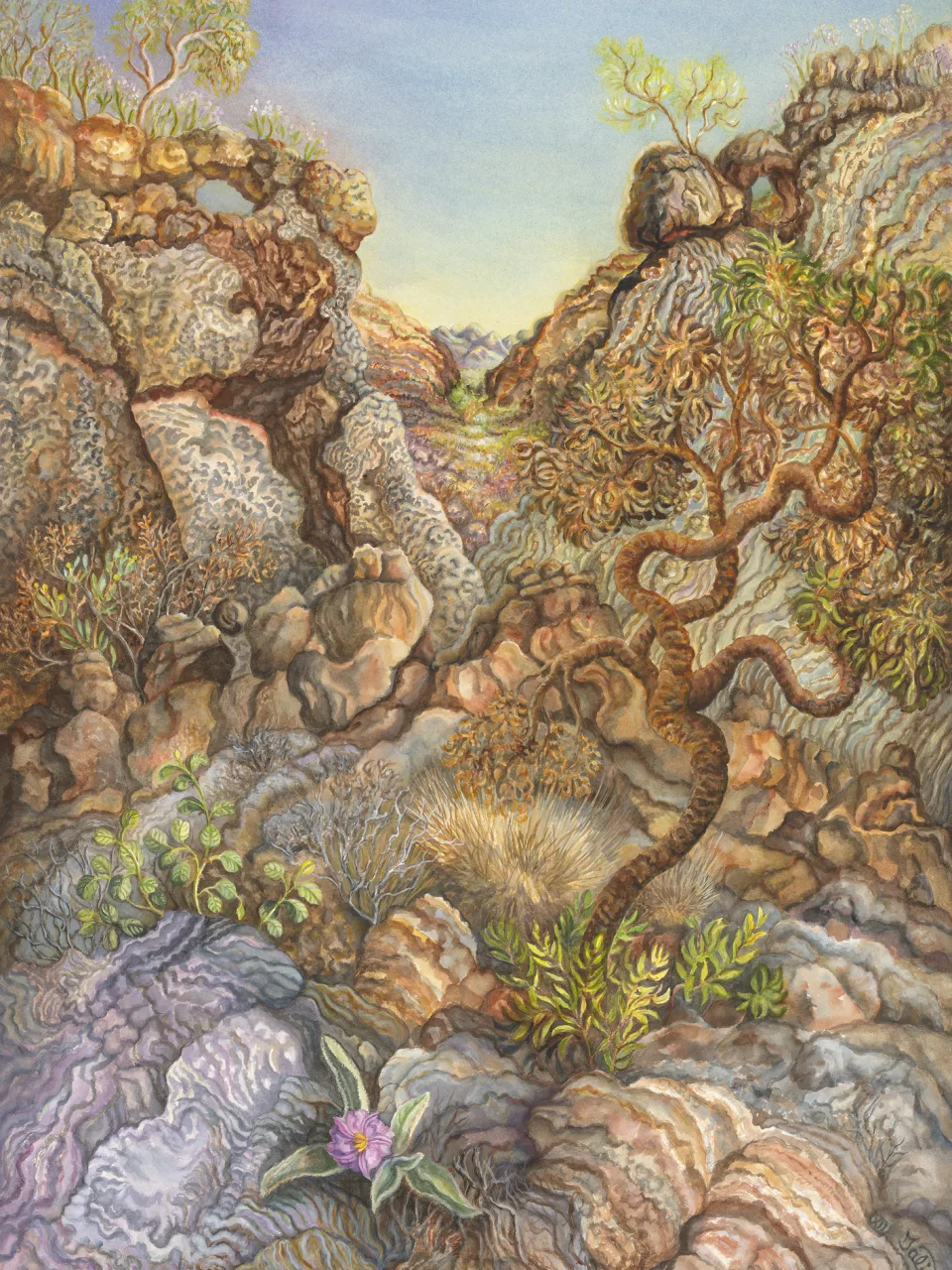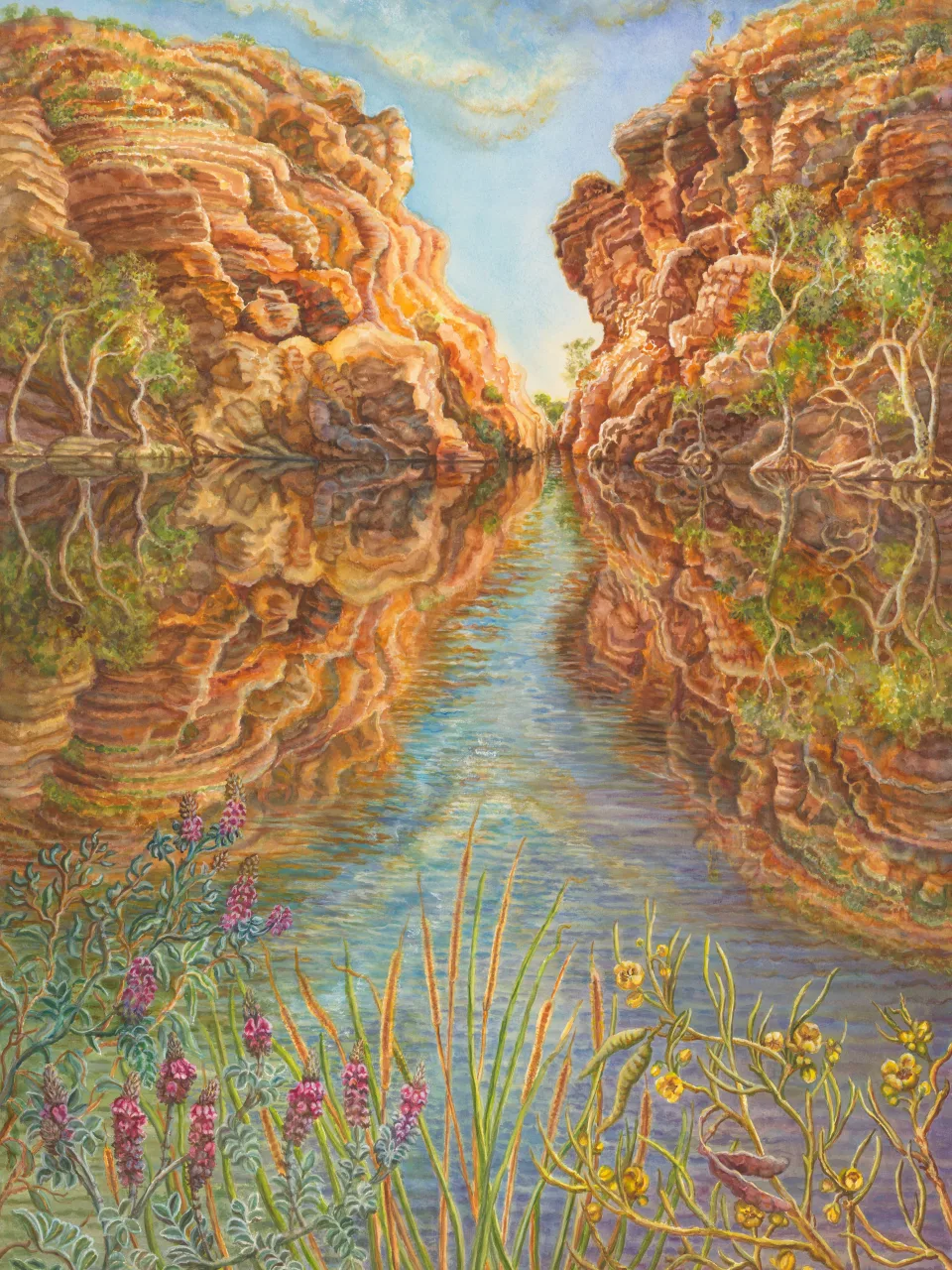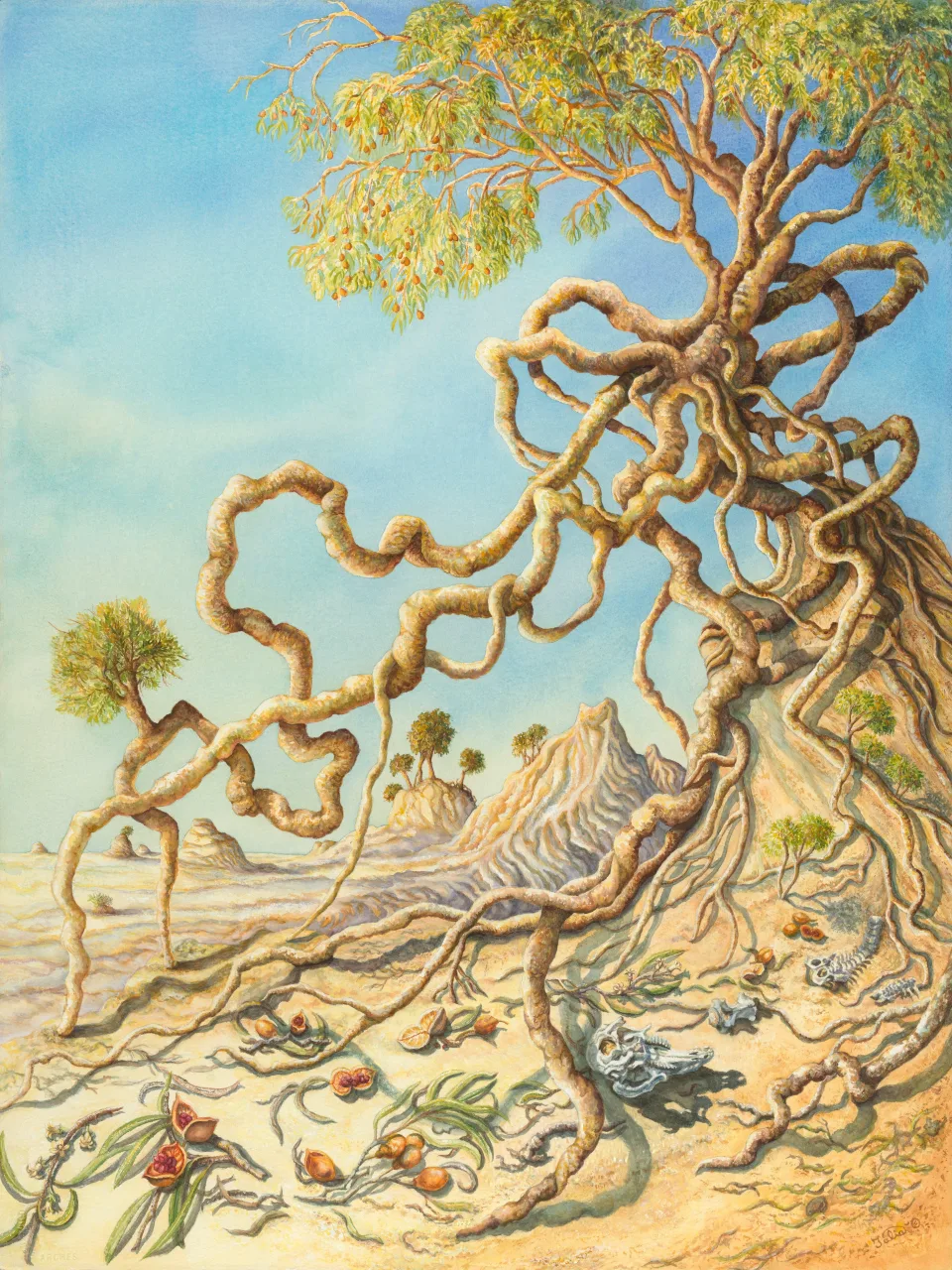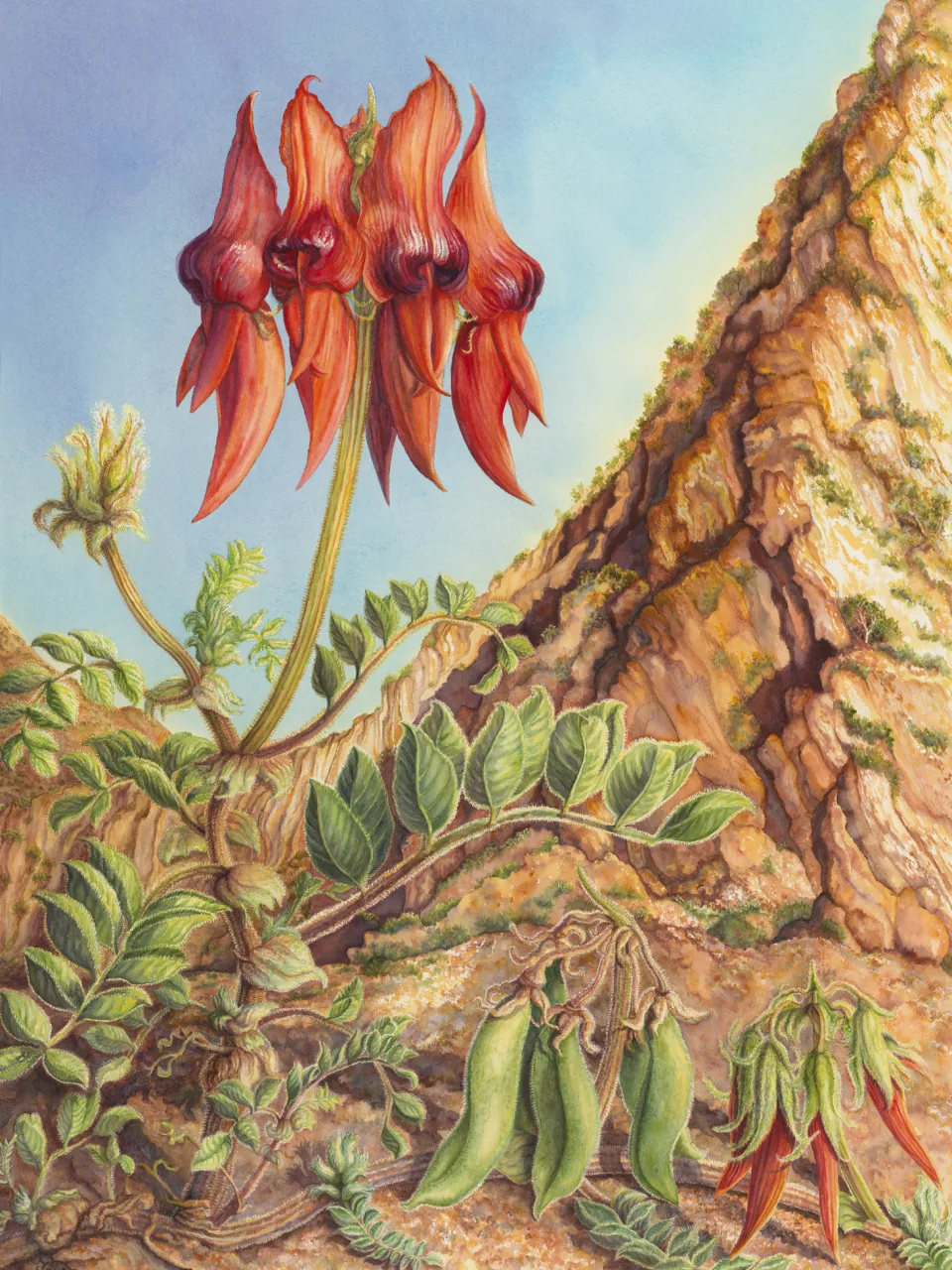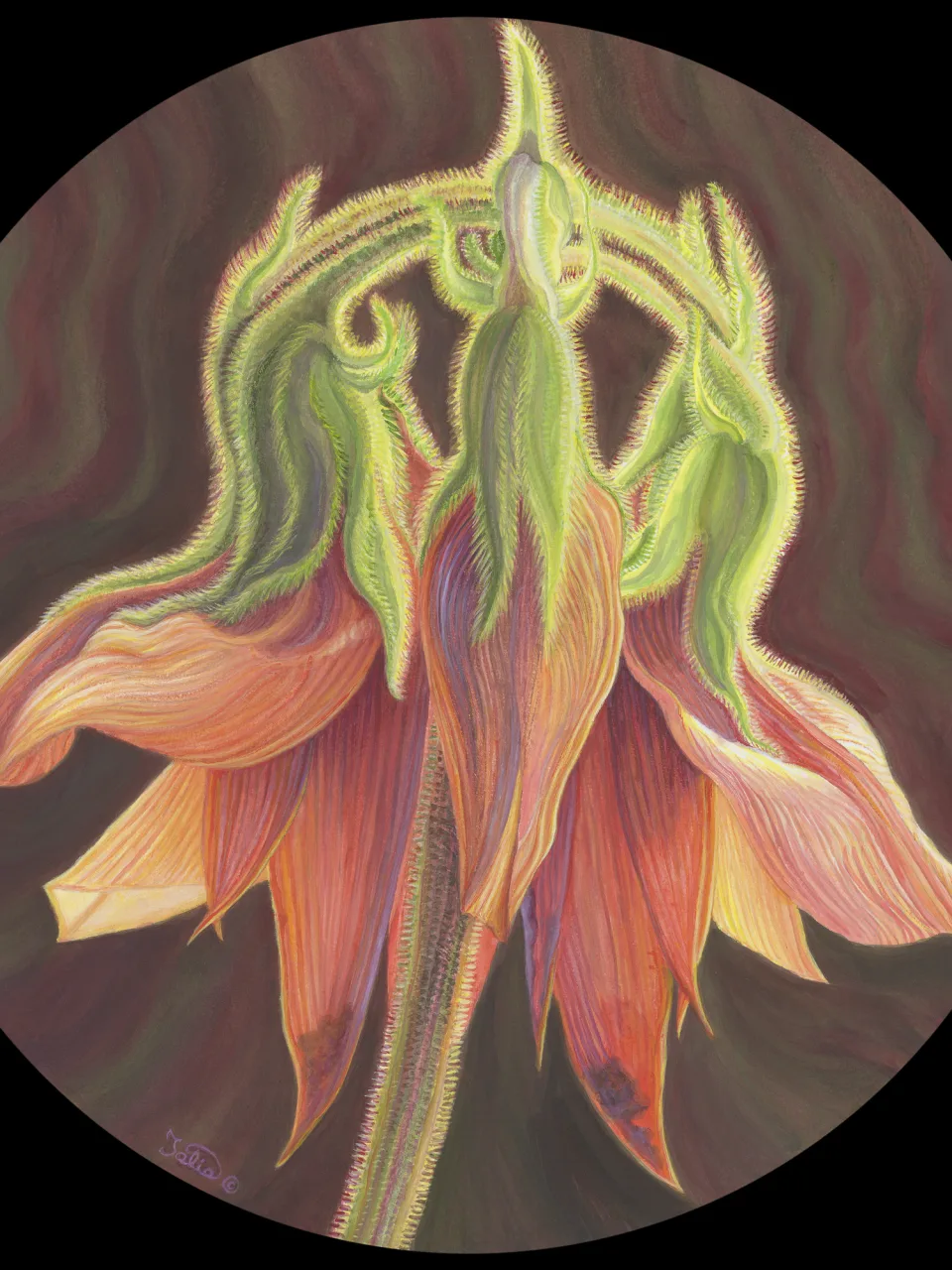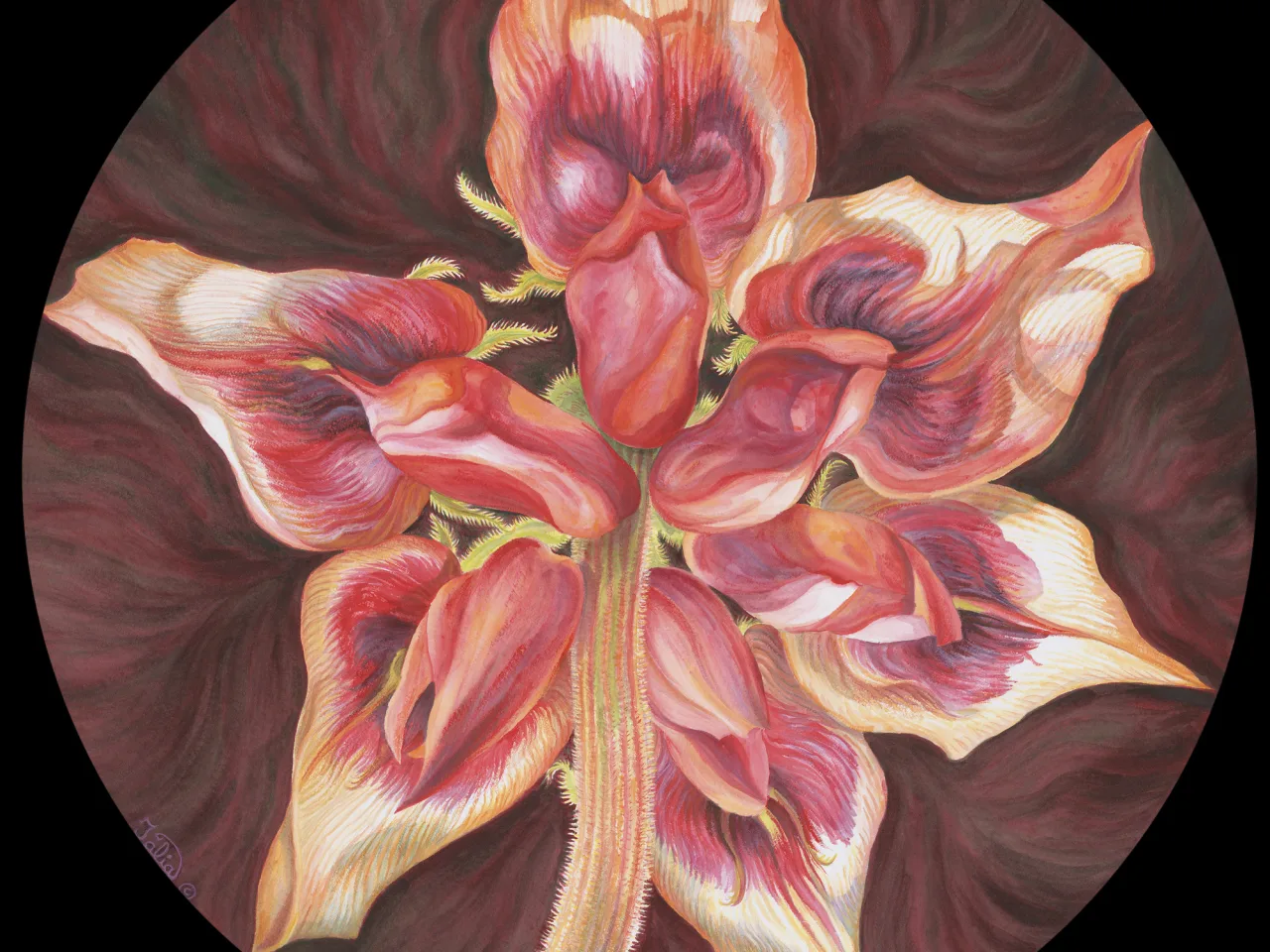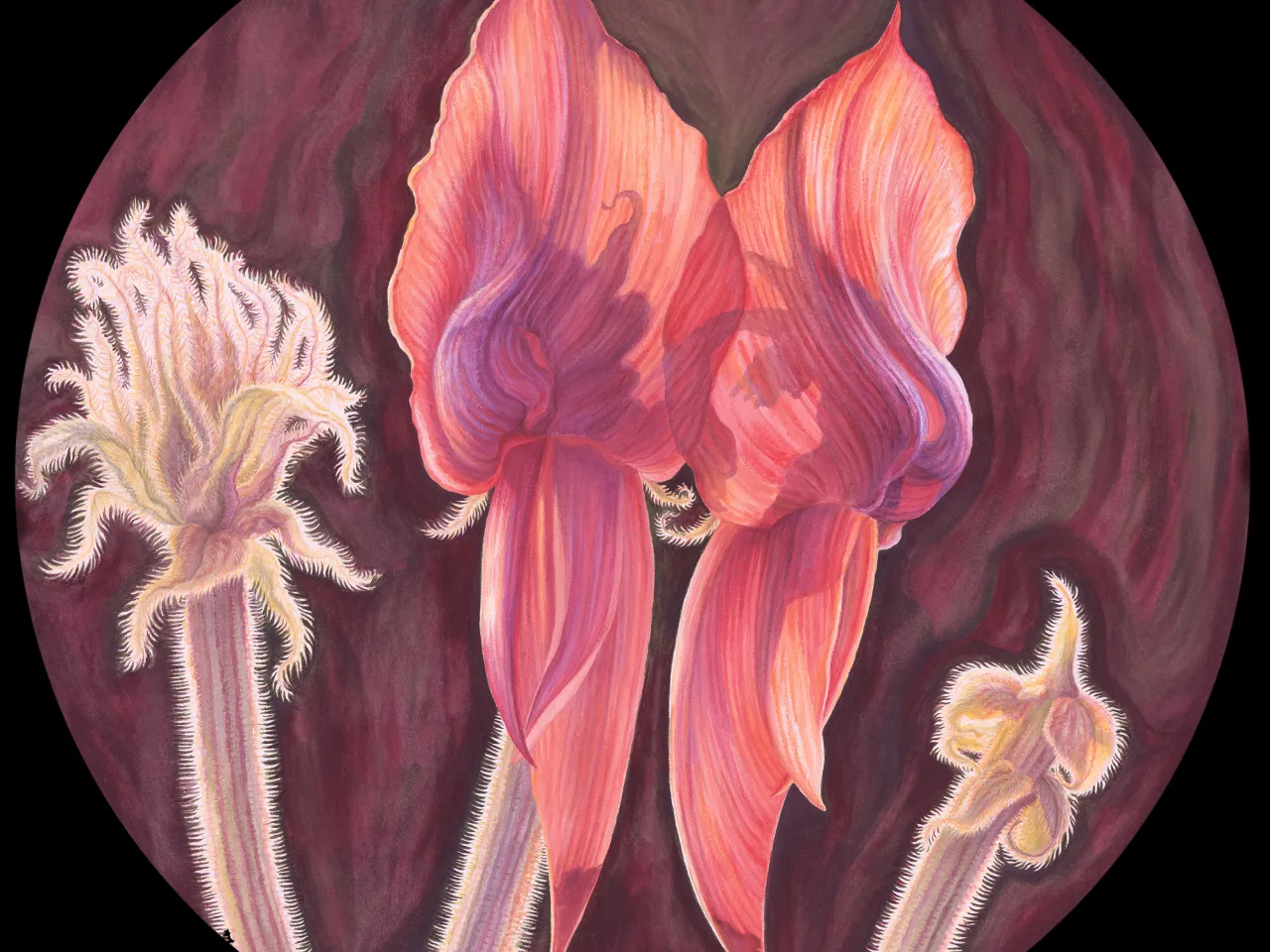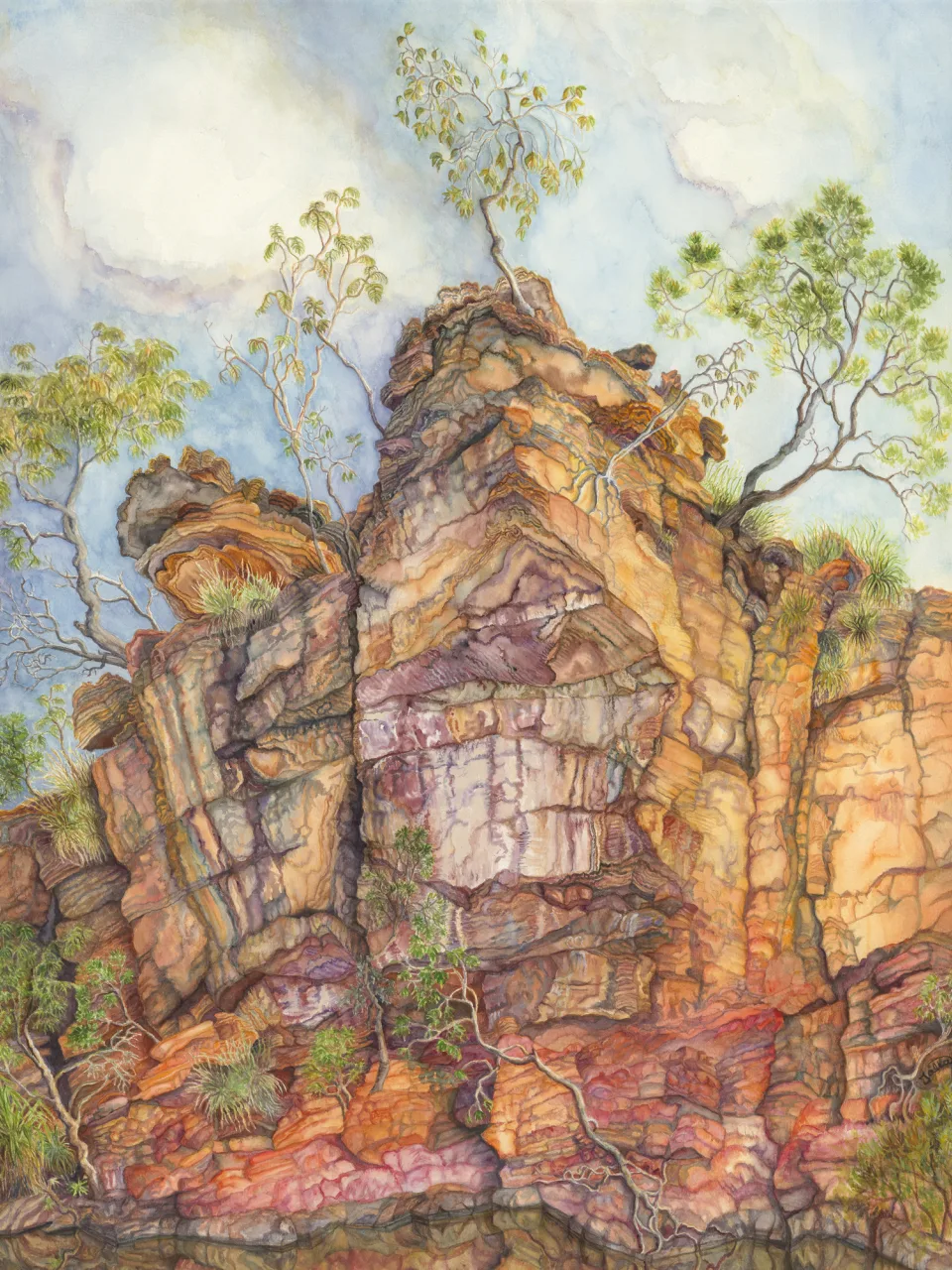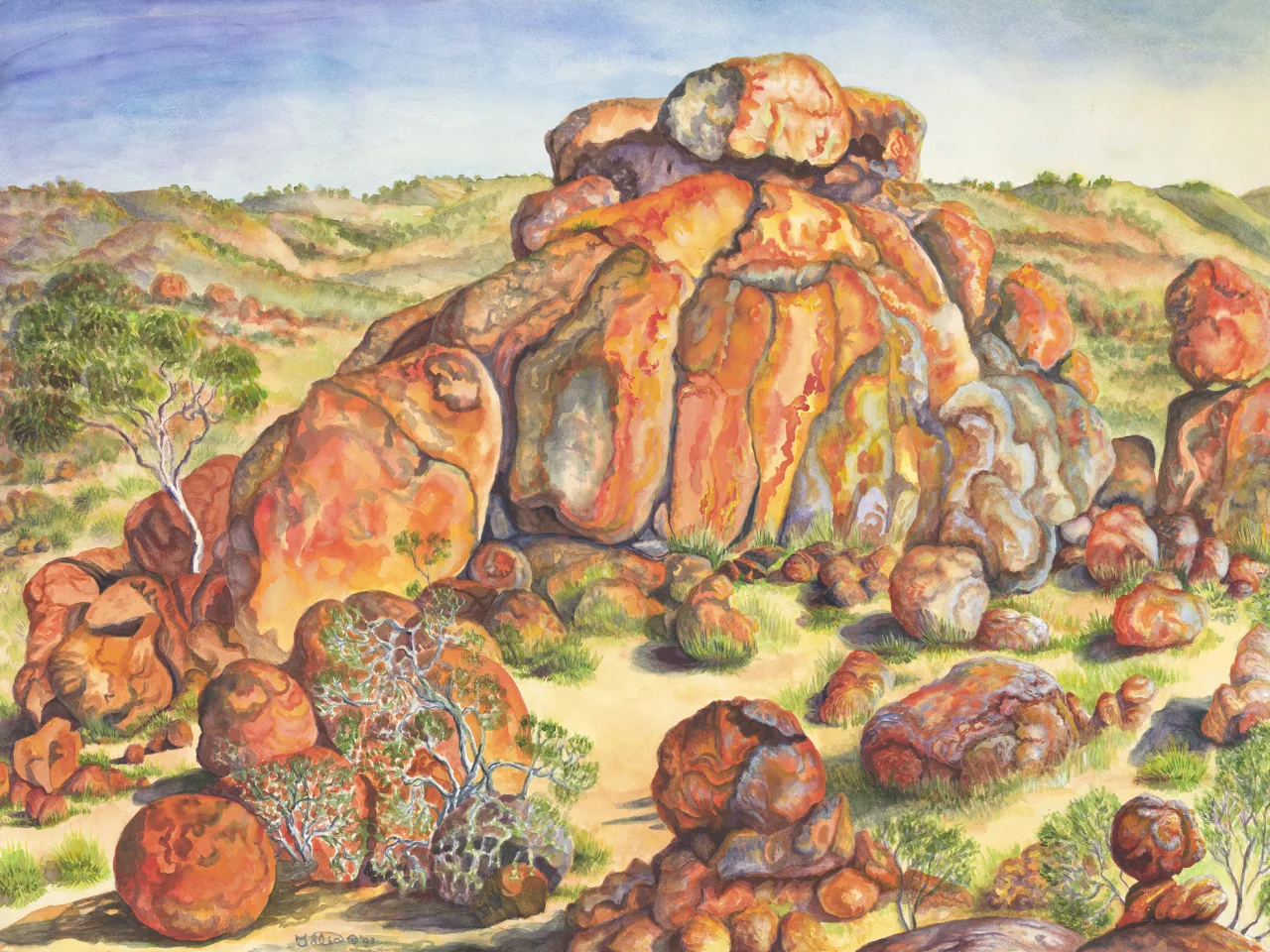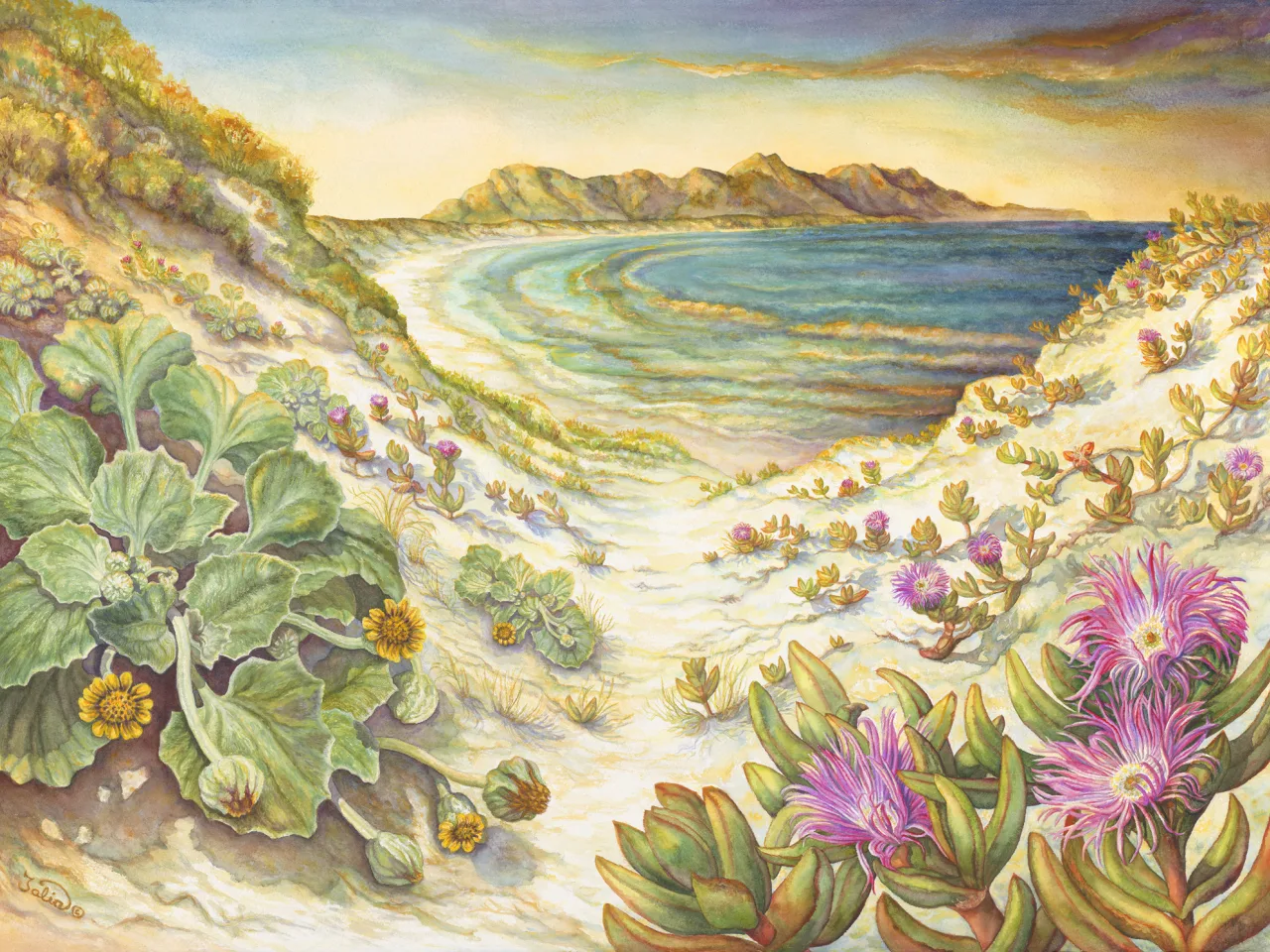Artwork 56 Ellery Quintet: A Year in the Life of a Desert Oasis. II—From Drought to Fire
Section 30
A Year in the Life of a Desert Oasis—Ellery Quintet
Ellery Creek, Tjorita / West MacDonnell National Park, Northern Territory
- 1. Chrysopogon fallax (ribbon grass)
- 2. Cladophora rhizoclonioidea (algae)
- 3. Myriophyllum verrucosum (red watermilfoil)
- 4. Senecio magnificus (perennial groundsel)
from the artist
Sometimes, as happened one year when I was painting in the Ellery Creek area, there is no rain February–September. I observed, sketched, and photographed a progression into dryness and drought. Fires followed, and burnt many hectares in the West MacDonnells, including the fire on the ridges which features in this painting—which burnt right down to the river red gums lining the creek. Exercising ‘artistic license’, I have represented the creek as narrow at this point, to draw the eye to both the burnt and unburnt banks, and to the plants on the banks and in the creek bed.
On one bank are the beautiful golden-yellow flowers of Senecio magnificus (“perennial groundsel”). With its toothed blue-green leaves spiralling around a tall stem, the Senecio plant I painted protruded boldly from a bed of dried ribbon grass (Chrysopogon fallax), as if defying the drought.
My eyes were drawn to the many roots seeking water from the creek bed, now elegantly draped with sun-drying algal veils, while more algae graced the remaining waterpools with floating green filaments. These green algae are often found in streams and lakes throughout Australia, and may form trailing mats a metre long, as at Ellery. They are branching, filamentous perennials called Cladophora rhizoclonioidea and are great survivors (Millar, 2012, p. 69). Their ancestors are ancient; filamentous green algae fossils have been discovered in the 850 million year old Bitter Springs Formation (Kenrick & Davis, 2004, p. 19). It is fascinating to sit and paint green algae that have existed globally for over 800 million years, and still inhabit the ephemeral rivers of inland Australia today.
The ancestors of these green algae may have been some of the earliest plants to reach Central Australia. They probably arrived during some of the many flood events when inland seas and ancient rivers covered plains and desert regions, from at least 850 mya until about 99 mya, when the seas largely withdrew and aridity descended (Johnson, 2004/2005, pp. 302–303).
The tiny reddish-pink plants in the foreground, mingling with the green algae, and emerging from the remnant moisture in Ellery Creek, are “red watermilfoil” (Myriophyllum verrucosum). They are native perennials, surviving from stem fragments, and from seeds that are spread by flooding, and are often found in ephemeral rivers, flowering on drying mud at water margins. These plants mostly grow submerged, and only emerge to flower and fruit as the waters recede.
